Bringing down, a civil Russian Plane over Sinai, Another over Sudan, Suicide Bombers in Lebanon, Hezbollah Ghetto. Suicide Bombers and gun attacks in Paris on Civilians, and it was the worse for France in History.
Over fifty powerful countries, united in a military forces, and efforts to destroy, those Terrorists, which they are causing the most hustle and crimes in the modern History, after the second world war.
Terror started, in bombing the American Embassy in Kenya, then the World Trade Towers, in New York, Then the launch attacks of USA on Afghanistan, then the occupation of US on Iraq, and all the time was Al Qaeda name on the top of the list as the Terrorists. US Troops in Iraq, had captured, most of the Terrorists, that used to attack the US troops in Baghdad, Those were smuggled through the Syrian Iraq Borders by the Syrian Intelligence, for many thousands, which the Syrian Regime used to put pressure on the American Administration to cooperate with the Syrian Regime, to have control, on Iraq with the assistant of Mullahs in Iran, and Lebanon, with the assistant of Hezbollah the Military right arm, to be used later in many wars against Israel, for the Syrian Regime Agenda benefits.
The West, had many terror attacks, carried out by terrorists, sure all claimed they are Muslims, Arabs Pakistani, Afghani, and whatever, and all those attacks, under the claim, that the West killing the Muslims, in Iraq, Afghanistan, As attacks in London, Paris, and Spain, claimed the same.
In 2011, when the Syrian People started to demonstrate, demanding Freedom of Press and Word, and sustain Human Rights, and reforms of a Regime, was ruling with the Steel Fist, worse than the Regime in Soviet Union, though Syrian Regime was the Spoiled Son of the Soviets. The Syrian Regime turned the demonstrations into deadly and bloody violence, by shooting indiscriminately on those civilians on the streets, of the Syrian Cities. Which forced the Syrian people to carry guns, to defend their Revolt.
As a result, of the Hustle and chaos, in the Region, Al Nusrah Jihadist, appeared in Syria, almost a year after the Revolts started, claiming, to fight against the Regime, and carried out several explosions and suicide bombers, which found out later, that it is a branch of Al Qaeda, but the majority of its members were Syrians. Whom willing to fight against the Regime.
Two years ago, another factor, of terrorism, had appeared in Iraq, and captured very large lands in North Iraq, claiming, the establishment of Daesh Group, named later as the Islamic State in Iraq and Levant, In addition, the areas that captured, by this Terror Group, was rich of Oil, which made the Group the richest, and can support itself, without relying on some richest men around the world, by selling the oil in the black market, the cheapest. The funny thing is that, those claiming fighting the Terror Group, are the Group's Customers who are buying the oil. Iraqis and Turkish.
As the Terror Group declared its State, thousands around the World, traveled to its Land, and joined the Fight for Islam, as was the Bait to bring them, that fast. Amazingly, those came by thousands, were all the West Countries Nationals, from Arab, Pakistani, Somali, and other Africans Origins, fled to the West, because of the Terror of their Countries Regimes, Dictators. Most of them were born in those West Countries.
The Leaders of the Islamic State were prisoners to the Americans in Iraq, and Prisoners to Syrian Regime in Damascus. The Americans released those in Iraq, under the Human Rights Concept. But in Syria, were released for different reasons, as Human Right Concept does not exist with a terror regime for 45 years. The Regime released those Criminals, to fight against the Syrian people Revolution, and quell it.
After Paris, atrocity, The World Powers, gathered in Turkey to declare ruthless and merciless war on Terror, which is called Islamic State, who pronounced responsibility of the terror attack series, the Russian Carrier, the bombing in Beirut, and the slaughter of over 150 people in Concert, most of them young and students, in Paris.
Decision taken, in those meeting, Hit the Terrorists, without Mercy. Now the Americans, French and British, jet fighters roaring in the Syrian and Iraqis Skies, using the most deadly weapons, had never used in any kind of a conflict ever. The Russian Putin who is claiming to destroy Daesh, who brought down the Russian Carrier, and killed 237, civilians, and holiday makers. Using ballistic missiles and advanced jet fighters Sukhoy, to destroy, the revolutionaries in Syria, ( Who are fighting Daesh), instead of bombing those Terrorists, who brought the Russian plane down. Isn't weird.
It is clear, that the Americans and the Russians, had cooperated to force a solution in Syria. The Russians will hit the Revolutionaries, and the West will hit the Islamic State.
But by putting end, to the Syrian Conflict, would it destroy the Terrorists of Islamic State, who are 99% foreign Nationals, most Westerns and Russians.
By then... The real war would be just started.
خالد
khaled-stormydemocracy



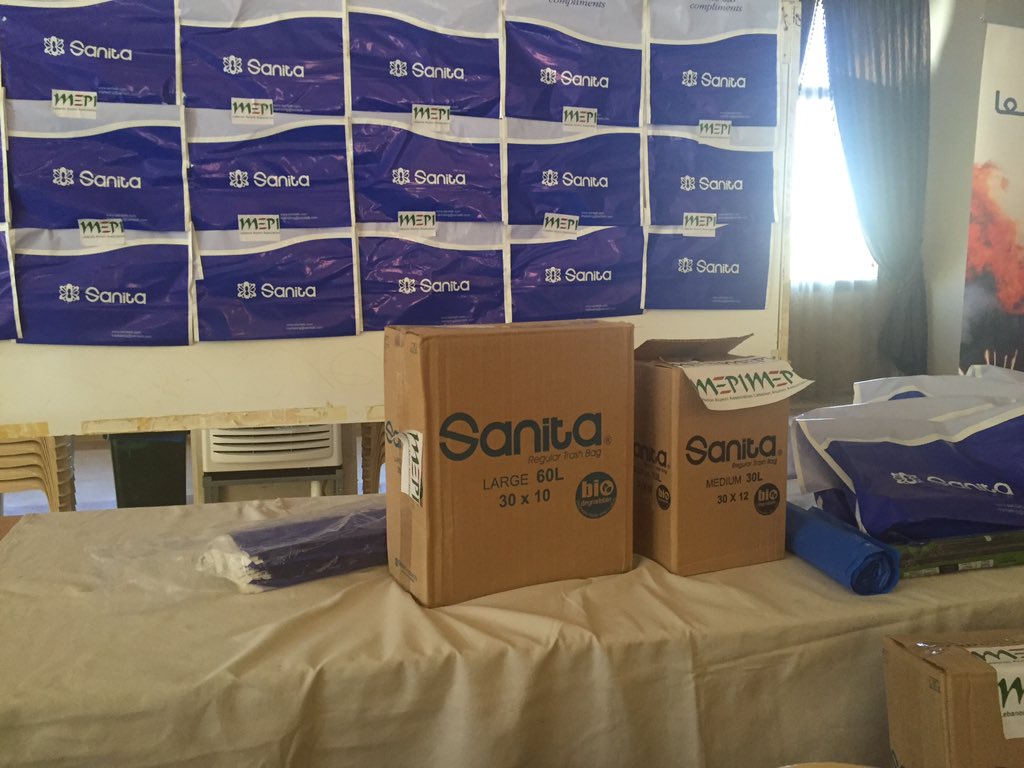
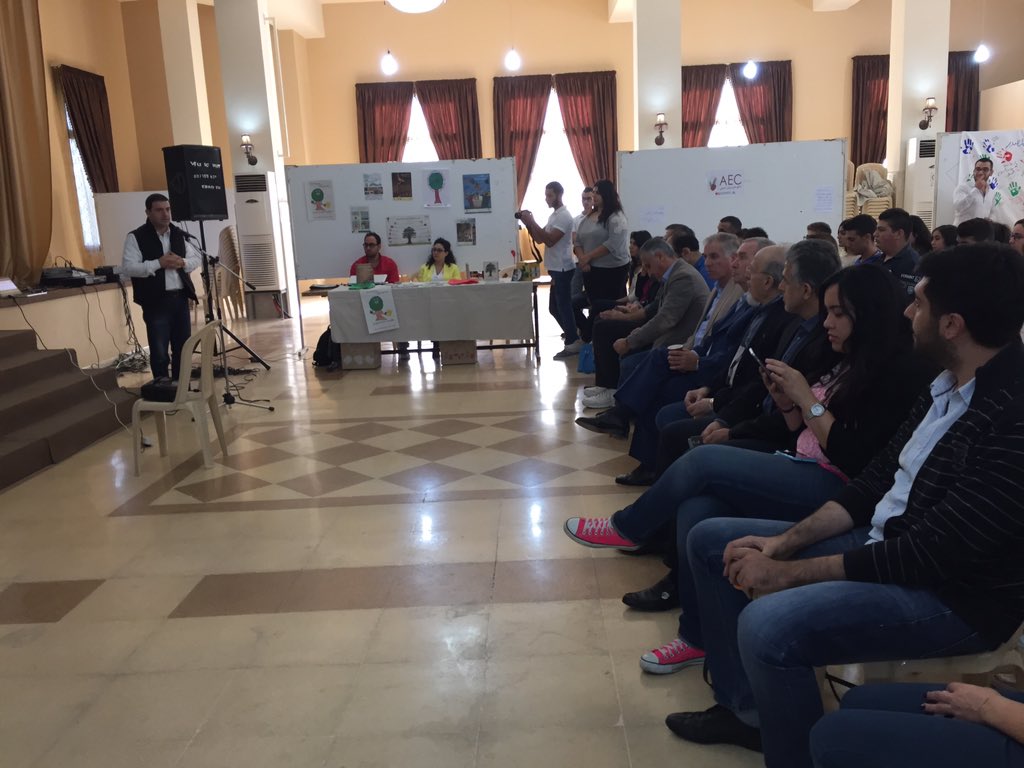
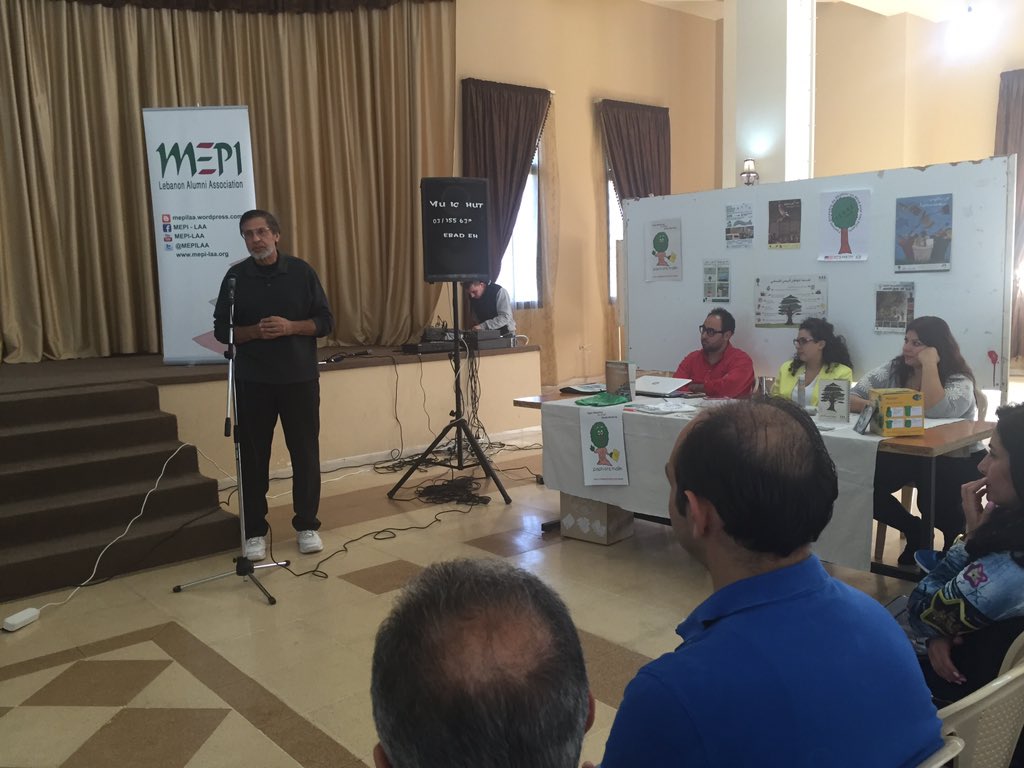


ziad Z Retweeted
الخبر الأهم في موضوع الإرهاب حتى الآن ..
إرهاب النظام السوري والإيراني خلف أكثر من 138000 شهيد،،
#اعتداءات_باريس


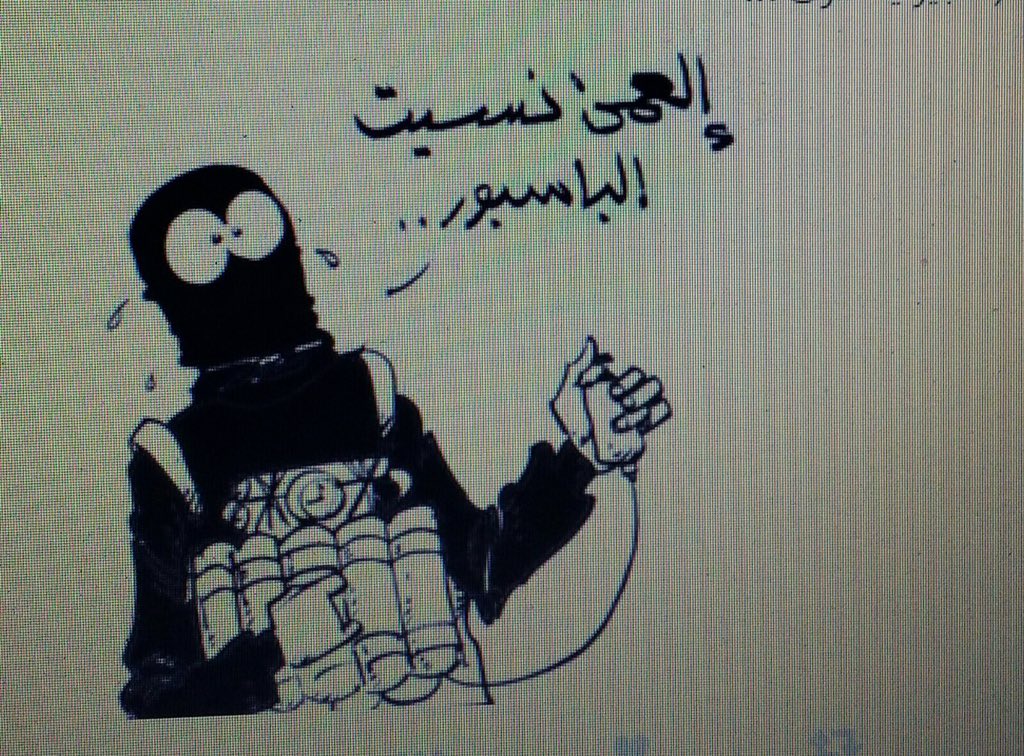
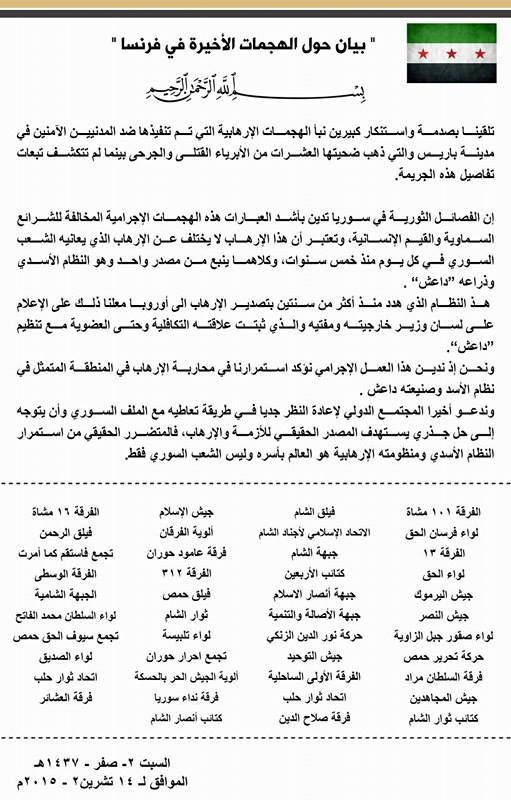


BREAKING: French President Hollande says his country will fight attackers 'without mercy’
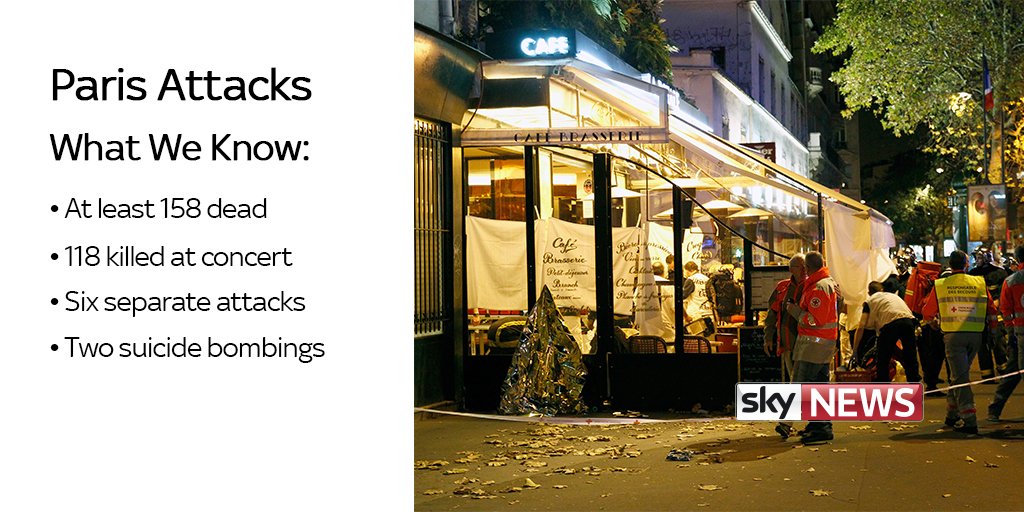
"Your fight is our fight", UK PM @David_Cameron makes statement on #ParisAttacks http://bbc.in/1QnIEc2
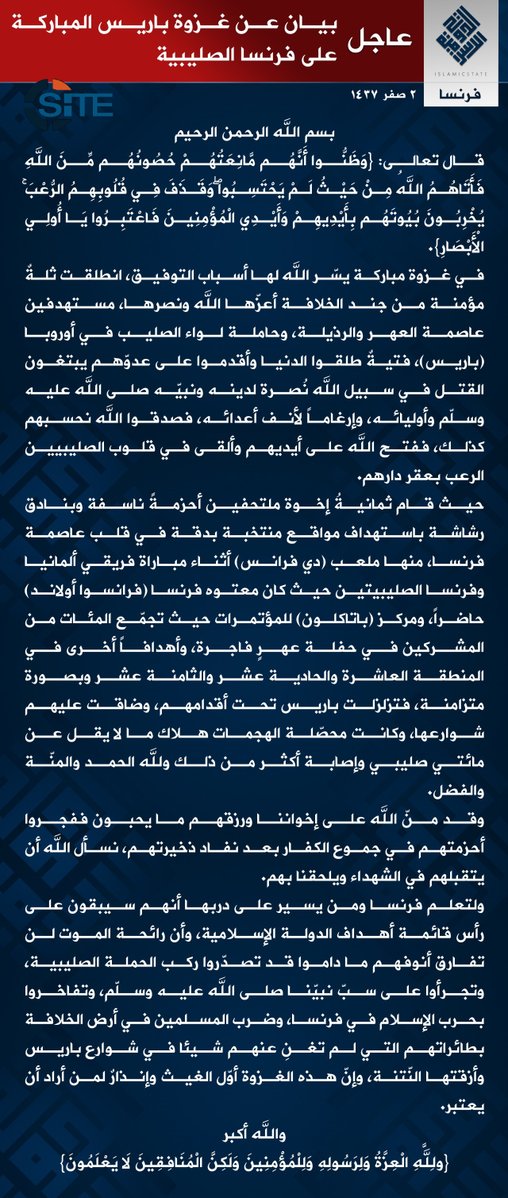
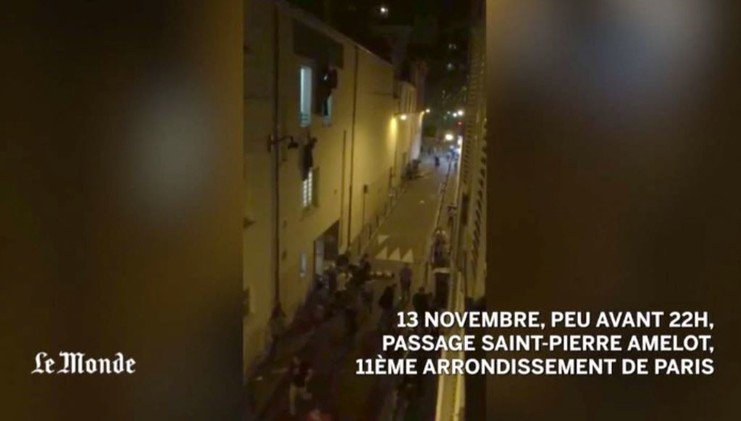
BREAKING: 'Terrorists' who held hostages at Bataclan concert hall were killed: Hollande http://reut.rs/1N2HrXn
Paris concert hall attack:
-100 dead, AFP reports
-2 attackers dead
-5 explosions were heard
http://cnb.cx/1SqhLlg
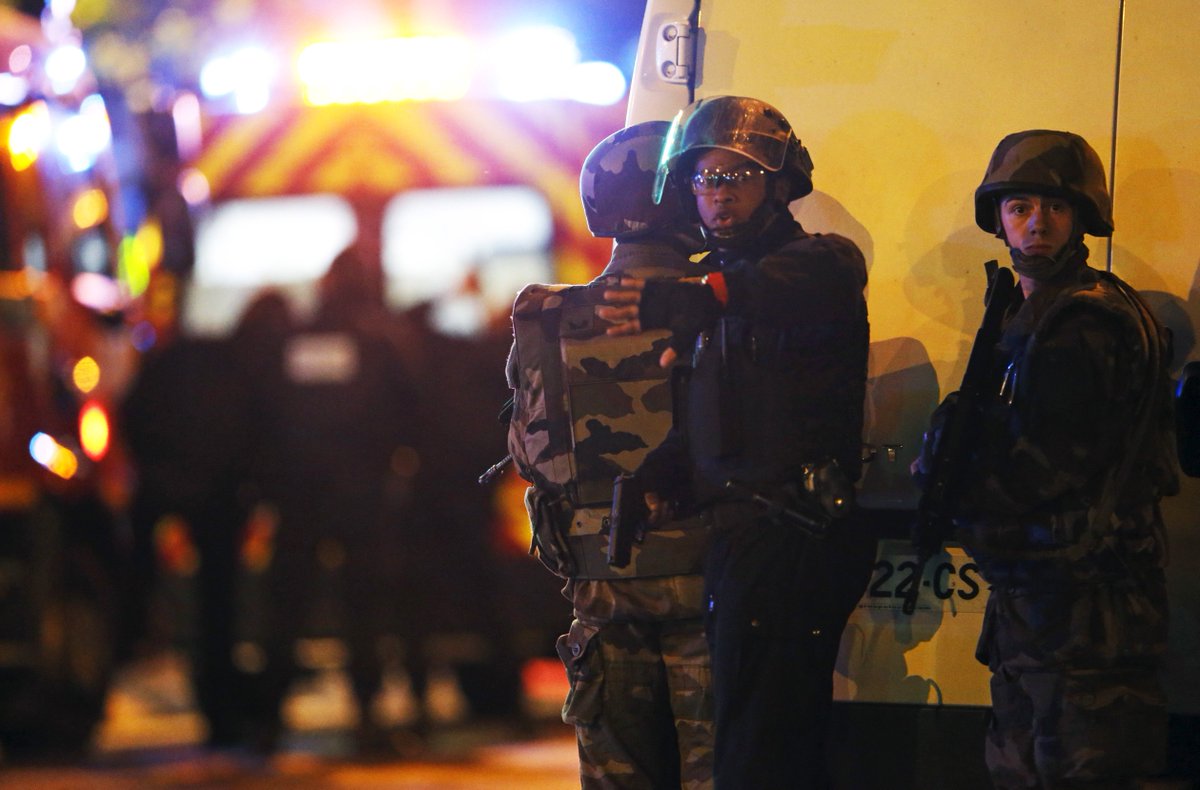
#Breaking: At least 100 killed after hostage situation in #Paris at #Bataclan concert hall http://www.euronews.com/2015/11/14/explosion-in-paris-near-stade-de-france-conversely-two-dead-seven-wounded-in …

Breaking- At least 100 dead in #Bataclan concert hall, most of them very young. #ParisAttacks
There are reports that the 'jungle' refugee camp in Calais has been set on fire. The refugees are trying to flee.

الشرطة الفرنسية: مصرع 112 شخصا في مسرح باتاكلان و40 قتيلا في مواقع أخرى وسط باريس
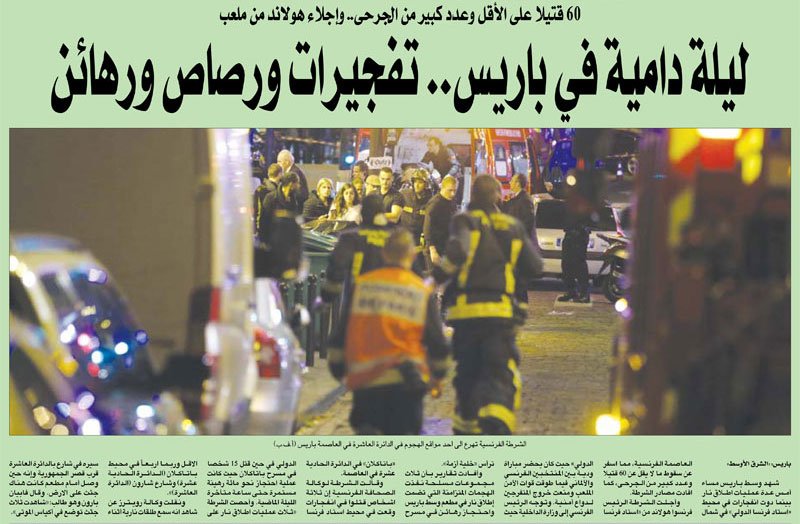
#جبهة_النصرة| إحدى التمائم التي وجدت مع أسرى #حزب_الله اللبناني في ريف #حلب الجنوبي على يد أبطال #جيش_الفتح

نداء الدماء

تتساقط تصريحات الاستنكار كسابقاتها مع أوراق الخريف، وتبرد المواقف. وحدها الدماء تبقى حارّة في وجَع الناس وهلَع الوطن.
لا يمكن أن تنتهي مذبحة برج البراجنة كما انتهت سابقاتها، إلى مزيد من الولوغ في الدماء، في دورة الموت التي لا تنتهي. فالحدّ الأدنى من الوعي والمنطق يفرض الابتعاد قليلاً عن ساحة الموت، والتفكير بهدوء في ما كان وصار، ومراجعة ما على لبنان وما لَه.
وليست الدعوة إلى الهدوء والمراجعة نوعاً من التوظيف في المأساة وتحريك السكّين في الجرح، بل هي نداءٌ عاقل للتبصّر وإجراء جردة حساب بسيط للأسباب والوسائل والنتائج.
لا يمكن البناء على تصريحات عاطفيّة متسرّعة صدرت عن بعض السياسيّين المزايدين والمحدوديّ الأفق، الذين حرّضوا على مزيد من التورّط في سوريّا تحت شعار محاربة الإرهاب في عقر داره.
وكان الأسوأ في تعليقاتهم على المقتلة أنّها نتيجة يأس المهزومين في سوريا وانتصار النظام، وتساؤلهم عن عدد التفجيرات اللازمة كي يقتنع "البعض" بوجوب التصدّي للإرهاب خارج الحدود اللبنانيّة، ما يعني تشجيعهم "حزب الله" على انغماسه ودعوة الآخرين للحاق به إلى هنالك.
من السهل تحريض "حزب الله" على المزيد، بينما المحرّضون متفرّجون، أو غارقون في لعبة النفوذ والسلطة والمال. وكلام العقل أصعب وأثقل على المحترق بالنار، وهو يفضّل الحكّ على حروقه وجروحه، ولا يتقبّل بسهولة نصيحة هنا أو إشارة هناك.
وحقيقة المصيبة أنّ الجروح والحروق لا تُصيب "حزب الله" وحده، بل لبنان بأسره. ومهما تمّ عزل الضاحية فهي في صلب النسيج اللبناني، بمجتمعه وأمنه واقتصاده وسياسته ودورة حياته. وما يُصيبها يُصيب كلّ الجسم اللبناني.
هذا ليس من باب التعاطف مع الضحايا فقط، بل من باب المصلحة اللبنانيّة العامّة التي تفرض سلامة المكوّنات وتكاملها وتفاعلها في الجسم اللبناني. فالضاحية، مهما انعزلت أو عُزلت، عضوٌ حيّ في هذا الجسم.
لذلك، لقد آن عمل العقول الباردة، ووقف العواطف المزايدة. وقد جاءت إشارة قويّة إلى هذا التوجّه من السيّد حسن نصرالله نفسه قبل يوم واحد من تفجيرات البرج.
فللمرّة الأولى يتخلّى قائد "حزب الله" عن لغة الحرب والردع، ويبتعد عن منطق الغلبة بالسلاح، وعن وصف 7 أيّار بـ"اليوم المجيد". بل ذهب إلى حدّ القول باستحالة تكراره لانشغال الإقليم والعالم عنّا بشؤون وشجون أكبر وأخطر، ودعا إلى تسوية سياسيّة شاملة.
وليس من المنطق أن تؤدّي مجزرة الضاحية إلى التراجع عن هذا التوجّه التسووي، بل إلى تقويته وتثبيت الإيمان به والبحث في خطواته العمليّة، وأوّلها تسوية في ملفّ انتخاب رئيس الجمهوريّة.
كما أنّ انخراط "حزب الله" في الحرب السوريّة مرشّح لإعادة النظر، ليس بقرار ذاتي منه، بل نتيجة انخراط إيران في تسوية فيينا، وتصدّر روسيّا واجهة القرار في سوريا.
وأيّ تقويم سياسي هادئ لنتائج 4 سنوات من الإنزلاق في الوحول السوريّة، يتوصّل إلى استنتاج حالة التعقّل المنتظرة، بعد إمعان النظر في كلّ المعارك من القلمون والزبداني والجولان إلى حمص وحماه واللاذقيّة وإدلب وحلب، بإخفاقاتها وخسائرها وأثمانها، واستحالة الانتصار فيها، ونفقها الأسود الطويل.
وبدلاً من السؤال عن عدد التفجيرات التي يجب أن تحصل كي نتصدّى للإرهاب، علينا أن نسأل: كم من الضحايا والقرابين يجب أن نقدّم بعد إلى إله الحرب العبثيّة و"المقاومة" التي تأكل أبناءها، وتأكل معهم مصير لبنان؟
في بيتنا دماء كثيرة، وخوفنا أن يبلغ سيلها الزُبى. وهي تناشدنا وقف آلة الموت.
والكلمة الآن للعقلاء، كي يستجيبوا نداء الدماء.
STORMY LB
لن نتوقف عند الرؤوس الحاميه التي نقلت مباشرة على اقنية الإعلام, والشتائم ولغة التخوين, التي استعملت لعشر سنوات. ومرورا بكل خطابات نصرالله, هل نرى في كلمته اليوم تصحيح لكل العنجهيه والإستكبار الذي اوصل البلد للخراب. كلمه حديثه لن تغيِّر استراتيجية نصرالله ومحو الماضي, حتى لو كانت ايران التي تقرر. نصرالله بيعرف انه سيحاسب يوماً على جرائمه بحق شيعيته اولاً, ثم تدمير الدوله اللبناني بالكامل. هل يتحوَّل من اسد الشرق, الى جندي بالجيش اللبناني. لا اظن ذلك. انها اللعب على الوقت, كي يجد المخرج الذي يبعده عن المحاسبه, كما يفعل الباش كاتب عنده... بشار الأسد. لا مخارج بالأفق.
خالد khaled-stormydemocracy
فلاح السعيدان
اخي خالد الكلام الي تقوله يعرفه حسن نصرالله لذلك لن يسمح للدولة ان تقوم ان لبنان يخسر كثيرا من سمعته عندما يعطل حزب انتخاب رئيس دولة اكثر من سنه ياخالد بلدنا محتل فعليا حتى لو راحت اسرائيل سيجد الحزب حجة ليستمر في تدمير بلدنا واضعافها لقد سمعنا منهم انهم الاقوى والاكثر وبدن بالدولة حجمهم الفعلي ولا تستغرب ان يكون رئيس لبنان مستقبلا يضع عمامة سوداء وله لحية طويلة ساعتها شو حتعمل يا خلوديييييييييي
STORMY LB
بهي بلد تعول اللحى بيحكو كتير والعمائم كذلك. لكن مش مسمحلهن يحكمو البلد, حتى لو كانت كل الإنبيه راضيه عنو. عاشين حالة الفيداراليه, منذ عشر سنوات. وكل واحد ع مزبلتو صيَّاح. كلهن بدن كش بالمذرايه, والاَّ رايحين ع حرب طاحنه. وما بتنفع الفدراليه او اللحى و العمائم خالد
هذا ما كشفته التحقيقات الأوّلية بتفجيري برج البراجن
عاين النائب العام التمييزي القاضي سمير حمّود ومفوض الحكومة لدى المحكمة العسكرية القاضي صقر صقر مكان وقوع الإنفجارين الإنتحاريين في برج البراجنة.
وقال القاضي صقر: “حتى الآن تأكدنا من وجود انتحاريين ونحقق للتأكد من وجود ثالث”، مشيرًا إلى أنّ “شعبة المعلومات ألقت القبض على شخص في طرابلس واحتمال كبير أنه على علاقة بإنتحاريي البرج”، مؤكدًا أنّ “وعي الأجهزة الأمنية أنقذ الشمال أيضًا”.
أمّا القاضي سمير حمود فأعلن عن نتائج التحقيقات الأولية، حيث لفت إلى أنّ التفجير الأول نفذ بواسطة دراجة نارية وكانت زنة العبوة 7 كغ، فيما فجّر الإنتحاري الثاني نفسه بحزام ناسف تبلغ زنة المتفجرات فيه 2 كغ”.
وتابع: “سنحلّل الحزام الناسف الموجود الآن مع غيره والأدلة الجنائية انتهت من رفع الأدلّة”.
وزارة الصحة: ارتفاع محصلة شهداء تفجيري برج البراجنة إلى ٤٣ شهيداً و٢٣٩ جريحاً.
37 قتيل و181 جريح إثر انفجارين انتحاريين في برج البراجنة

- إصابات في تفجيرين إنتحاريين وقعا قرب مركز للأمن العام في منطقة عين السكة في البرج
- فرق من الصليب الاحمر تتوجه الى موقع الانفجار في منطقة برج البراجنة
- – المعلومات الأولية تشير إلى سقوط 10 شهداء وعدد كبير من الجرحى في انفجاري البرج
أبو فاعور أوعز الى المستشفيات استقبال جميع جرحى انفجاري برج البراجنة على نفقة وزارة الصحة</
دعوة للتوجه الى المستشفيات القريبة من الضاحية للتبرع بالدم لإسعاف الجرحى
- الأمن الداخلي: نطلب من المواطنين الابتعاد من موقع الانفجار وإفساح المجال أمام سيارات الإسعاف لنقل المصابين
- الصليب الأحمر يتحدث عن 8 شهداء بتفجيرين انتحاريين في برج البراجنة بالضاحية الجنوبية لبيروت
- أجزاء من الحزام الناسف كانت بحوزة الإنتحاريين لم تنفجر بالكامل
شعب حمار ما بده يفهم انه هول التنين استشهدوا من ٣ سنين على يد حزباللة بصيدا!!
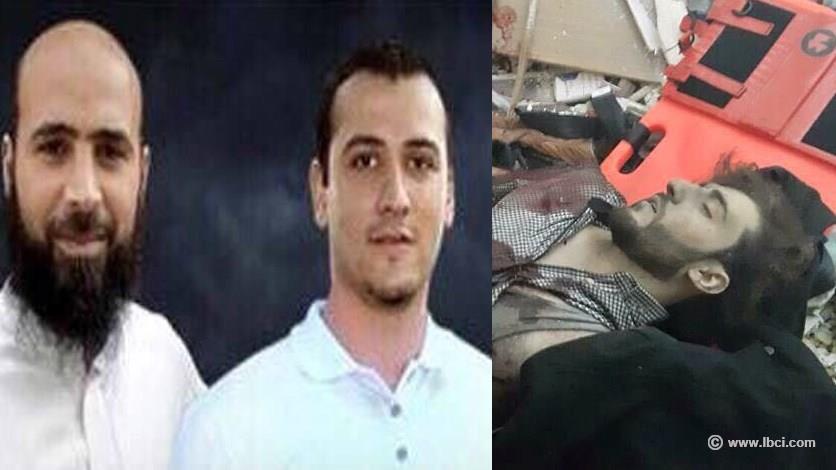
تبنى تنظيم "الدولة الاسلامية" عبر موقعه الرسمي على "تويتر" التفجيرين الارهابيين في الضاحية الجنوبية ونعى 3 من منفذي ما أسماها "الغزوة" وهم المدعو حامد رشيد البالغ فلسطيني الجنسية، عمار سالم الريس فلسطيني الجنسية، وخالد أحمد الخالد سوري الجنسية.
- . هذا ما نشرته السياسة الكويتية في 3 الحالي عن تفجيرات الأمس
- كشفت أوساط قيادية في »الجيش السوري الحر« في بلدة عرسال اللبنانية في البقاع الاوسط، عن أن نحو 35 عنصراً من عصابات »داعش« المتطرفة استقروا في بيروت حول الضاحية الجنوبية مقر »حزب الله« وحسن نصر الله وقياداته، خصوصاً في بعض الجهات الفلسطينية وفي المرتفعات الجبلية المشرفة على مطار بيروت الدولي، استعداداً على ما يبدو، حسب أحد قادة كوادر »جبهة النصرة«، لاستئناف التفجيرات والاغتيالات في مناطق »حزب الله« المدنية والعسكرية المكثفة.
- كما نشر »داعش« سلسلة صواريخ »كاتيوشا« و«غراد« في المرتفعات الجبلية اللبنانية الشرقية المشرفة على بلدات شيعية، كان بعضها تعرض قبل سنتين لسيارات مفخخة ادى انفجارها الى مقتل وجرح الكثير من المقاتلين الحزبيين الشيعة والمدنيين الداعمين لهم. وقالت أوساط »الجيش الحر« في عرسال لـ«السياسة«، أمس، ان »قيادة »حزب الله« ستتعرض لعمل مؤلم جداً يثير الشارع الشيعي في بيروت والبقاع والجنوب، ويؤدي الى قطع الطرقات الدولية بين العاطمة والمناطق الاربع الاخرى، كما ستحدث انفجارات على طريق بيروت – المطار توقف الرحلات الجوية من لبنان وإليه«.
- وذكرت الأوسط انه »يبدو ان القوى العربية والغربية المعادية لـ«حزب الله« قررت اخيرا البدء بسيناريوهات عدة ضده، أولها اعادة ضربه في عقر داره وإحداث فوضى عارمة في قياداته وعناصره، تبلبل توجهاته في لبنان وسورية، ثم القيام بما أمكن من تصفيات داخل قياداته السياسية والامنية في طليعتها الأمين العام حسن نصر الله وبعض اللصيقين به من نواب ووزراء في البرلمان والحكومة، اضافة الى قيادات الامن وعلى رأسها وفيق صفا المسؤول عن امن نصرالله وقادة الحزب، وعن العلاقات مع الأحزاب الأخرى والدولة والجيش والامن اللبناني«.
- وكان أحد السفراء العرب على هامش لقاءي فيينا بشأن حل الازمة السورية في نهاية الأسبوع الفائت أكد لـ«السياسة« ان اللقاءات غير الرسمية التي حصلت هناك أظهرت وجود امتعاض حقيقي بين بعض ممثلي ايران في الاجتماعيين من النزول الروسي في سورية »الذي لم يكن لا على البال ولا على الخاطر، وان احد المفاوضين الايرانيين الكبار قال لنظير خليجي له ان نزول الروس في سورية لم يكن له أي مبرر، وهو نزول إعلامي أكثر مما هو نزول عسكري جوي، إذا ان تصريحات بعض القادة الروس في موسكو عن اخفاق ايران وحزب الله والحرس الثوري في الاستمرار بحماية بشار الاسد عدة أشهر اخرى، إنما هي محاولات لتدبير الاحتلال الروسي الكامل لهذه الدولة الصديقة التي اخذت قيادة الثورة الايرانية على عاتقها حمايتها من السقوط منذ بداية الحرب فيها قبل نحو 5 سنوات، وربما قبل ذلك، وقد جاء فلاديمير بوتين اليوم ليقطف الثمار الايرانية بشكل وقح، معبراً بإرساله المقاتلات الروسية الى سورية عن فشل المساندة الايرانية للنظام وصولاً إلى سقوطه خلال الاشهر الستة المقبلة فيما لو لم يتدخل«.
- وكشفت أوساط »الجيش الحر« عن أن الامن اللبناني الرسمي، الذي يتشكل معظمه من العناصر الشيعية في البقاع وعلى حدود سورية بالمشاركة مع أمن »حزب الله«، تمكن خلال الاسابيع الخمسة الماضية من اكتشاف عدد من محاولات التفجير والانتحار الارهابي والاغتيال في الضاحية الجنوبية لبيروت وفي منطقتي الاوزاعي الساحلية والشويفات الجبلية، كما تم اكتشاف صواريخ ارض – ارض منصوبة موجهة الى مناطق محددة من الضاحية بينها المقار المحتملة لحسن نصر الله ونائبه نعيم قاسم وعدد ممن يقيمون هناك، وقد تم اعتقال بعض الفاعلين الذين ما زالوا بين ايدي امن الحزب، قبل نقلهم الى الامن اللبناني إذا نقلوا فعلاً«.

- التحكم المروري : قطع الطريق من مبنى البلدية برج البراجنة باتجاه عين السكة بسبب الانفجارين
-
الجيش: العثور في موقع الإنفجار الثاني في برج البراجنة على جثّة إرهابي ثالث لم يتمكن من تفجير نفسه
-
الجيش: ارهابي فجر حزاماً في برج البراجنة تلاه اقدام ارهابي آخر على تفجير نفسه بالقرب من الموقع الأول
-
-
حصيلة الشهداء وصلت الى 27 شهيدا 13 منهم في مستشفى الرسول الاعظم و10 شهداء في مستشفى الساحل و4 في مستشفى بهمن حتى الساعة |
-
مراسل الـmtv نقلا عن مصادر حركة "أمل": الإنتحاري الثالث قتل جرّاء التفجيرين بعدما فشل في تفجير نفسه http://bit.ly/1SLC0uK
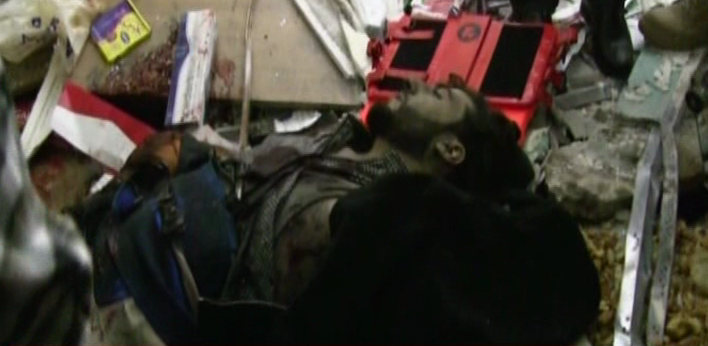
-
العثور على جثة غير مكتملة لا يزال الحزام الناسف الذي لم ينفجر ملتصق بها نقلت في عداد جثامين باقي الشهداء #برج_البراجنة
-
أربعة أبنية سكنية على الأقل تضررت بشكل كبير جراء الانفجارين
-
الصليب الأحمر: 16 شهيداً و 40 جريحا في حصيلة اولية لتفجير ضاحية بيروت
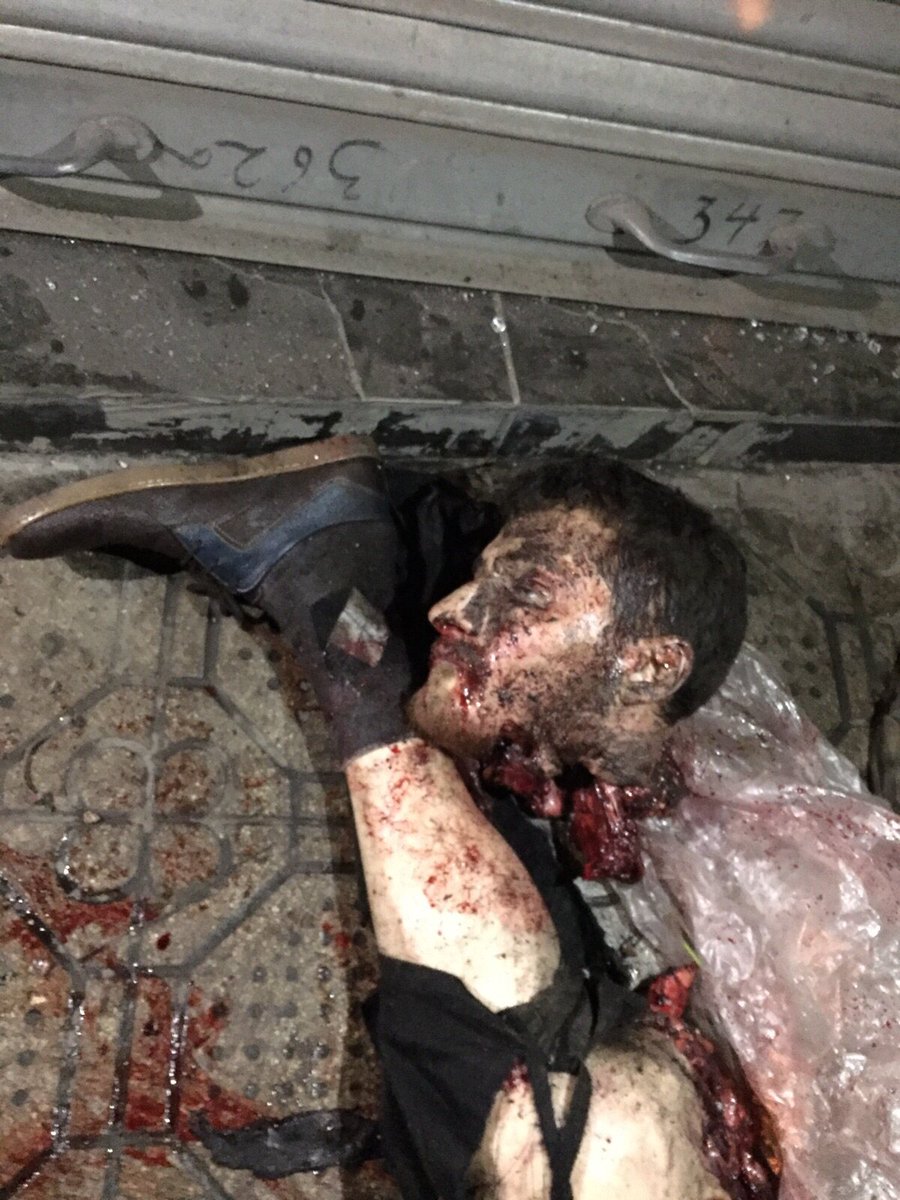
-
صحف لبنانية عن مصدر أمني: انتحاريا برج البراجنة كانا على دراجتين ناريتين
-
معلومات عن استشهاد علي قبلان ابن الشيخ عبد الامير قبلان في #تفجيري_برج_البراجنة #لبنان


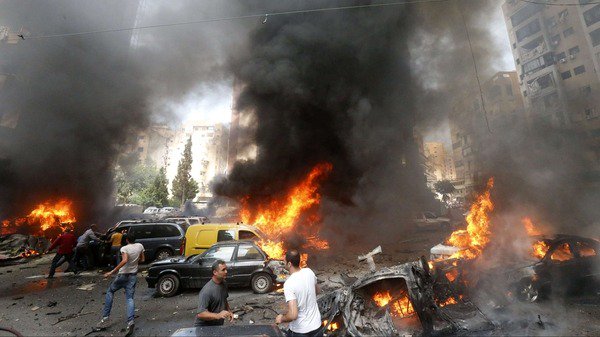
Liban8: الإنتحاري الثاني يبدو أنه يرتدي حزامين ووجد حزام ما زال الصاعق مربوطا فيه </
أزمة "الميثاقيّة"
الـيـاس الزغـبـي 
نشر:7/11/2015 12:10 AM

أسوأ ما أصاب لبنان في الآونة الأخيرة هو إيصال أزمته السياسيّة إلى المسّ بقدس أقداسه ومعنى وجوده، أي ما يُعرف بـ"الميثاق" التاريخي، الذي رعى قيامه كدولة وأرسى قانونيه الأوّلين، الدستور و"الصيغة".
وقد اتّخذ "الميثاق" إسماً متقدّماً قبل اتفاق الطائف وفيه وبعده هو "العيش المشترك"، وشكّل صمّام الأمان لاستمرار مرافق الدولة، حتّى في أحلك مراحل الحرب وسلطة الوصاية والاحتلال. ولم يكن هناك أيّ خلاف على جوهره وفكرته الخلاّقة التي شكّلت نموذجاً للشرق، سابقاً وراهناً، وبدأت تشكّل نموذجاً صالحاً للغرب وسائر العالم المتنوّع، لاحقاً.
وتكمن الخطورة الآن في تحويل فكرة "الميثاق" و"العيش المشترك" من صيغة حياة إلى وجهة نظر. فهي ساقطة بانسحاب المكوّن الشيعي من حكومة الرئيس فؤاد السنيورة الأولى، وصامدة برغم تغييب المكوّن السنّي الأساسي في حكومة نجيب ميقاتي الثانية، ومضمونة برغم غياب المكوّن المسيحي أو نواته الصلبة في جلسة "تشريع الضرورة". فضلاً عن البحث الحائر والمزمن عن تفسير الشراكة والميثاقيّة في قرارات مجلس الوزراء مع خلوّ سدّة الرئاسة الأولى.
ولم يتردّد "فاخوري" الجلسة العتيدة الأسبوع المقبل، الرئيس نبيه برّي، في ابتداع توصيف جديد للميثاقيّة هو "خير الوطن والمواطن". ولا يحدّد هذا التعريف الفضفاض أين يبدأ هذا "الخير" وأين ينتهي، ومن هي الجهة المخوّلة جدولة أولويّات خيره وإدراج هذه وحذف تلك.
ولم يستطع الرئيس برّي، مع سائر المتحمّسين لـ"تشريع الضرورة"، تبرير إسقاط قانون الانتخاب من الجدول، إلاّ بأسباب شكليّة مثل كثرة المشاريع المطروحة وعدم التوافق المسبق على أحدها.
ولكنّ الواقع غير ذلك تماماً: فالمشاريع الجديّة ليست أكثر من ثلاثة، أوّلها مشروع برّي نفسه، والمشروع الثلاثي المشترك بين "الاشتراكي" و"المستقبل" و"القوّات"، والمشروع التي قدّمته حكومة ميقاتي - "حزب الله".
وليس هناك أفضل من هذه المرحلة الانتقاليّة لإنتاج قانون انتخاب جديد، فيتم كسب الوقت في فترة الفراغ الرئاسي الضائعة، ويكون القانون جاهزاً بعد انتخاب الرئيس وتشكيل حكومة جديدة، فتُجرى الانتخابات ويُعاد تكوين السلطة بسرعة تعوّض ما فات.
إذا صدقت نيّات القادة السياسيّين يُقدمون على تشريع قانون الانتخاب جنباً إلى جنب مع تشريع الضرورات الأخرى من ماليّة وإداريّة وسياسيّة. وإذّذاك يُنقذون "الميثاقيّة" في شقّها الأوّل، ويُكملون الشقّ الثاني بملء الكرسي الشاغر في بعبدا. فما المانع من التصويت على الأمرين في الجلسة؟
ولا يخفى أنّ نقطة ضعف "الموقف المسيحي" تكمن في التناقض لدى طرف أساسي بين شرط إدراج قانون الانتخاب وتعطيل الرئاسة الأولى في الوقت نفسه.
وتزداد هشاشة هذا الموقف في حال تراجع هذا الطرف عن شرطه بحجّة حصوله على مطلبين آخرين، هما استعادة الجنسيّة وإعادة أموال البلديّات. وفي هذا التراجع عند حصوله تظهر بصمات "حزب الله" بوضوح، على حساب التفاهمات الأُخرى و"أوراق النيّات".
وكلّ هذه المواجهة "الميثاقيّة" تحتاج إلى لياقة قياديّة عالية وحسن إدارة واعية، لئلاّ تتحوّل إلى تهمة للمسيحيّين بتعطيل الدولة، وقد بدأت طلائع هذا الترويج بالظهور كوسيلة للتهويل والضغط.
أمام القيادات المسيحيّة فرصة أيّام معدودة كي يُنقذوا قيم "الميثاق" و"العيش المشترك" و"الشراكة" من الانحراف في تفسيرها، فلا تكون على قياس مصالح سياسيّة ومكاسب شخصيّة وخاضعة لاسترضاءات ومساومات، بل تستعيد جوهرها في تكريس النموذج الانساني والسياسي والوطني الصالح للبنان وسواه.
وإنقاذ الميثاقيّة الصحيحة يبدأ من إعادة التوازن المضروب الآن بين السلطات بفعل تغييب موقع رئاسة الجمهوريّة. فإذا كان بعض القيادات المسيحيّة يريد فعلاً استعادة الشراكة الحقّة، عليه أن يعمل لتحقيق التلازم بين خطّين: إنتخاب رئيس وقانون انتخاب.
فلا "ميثاق" بدون رئيس. ولا تكوين سلطة بدون انتخابات.
هنا يكمن سرّ استرجاع "الميثاقيّة" وتخليصها من التوصيفات والتفسيرات الطارئة.
وما سوى ذلك، مجرّد لعبة سياسيّة تقليديّة، وتوزيع حصص، ومزيد من الانحدار.
STORMY LB
صارت الميثاقيه متل مسمار جحا. باع بيتو وترك مسمار معلِّق عكيه الجوكتَّه. والعيش المشترك متل قميص عثمان. يلي باعو الوطن كل شوي بيرجعو يطالبو, بحقوقهن وميثاقيتن و بحجمهن المذهبي وبحقوقهن المهدوره تحت جاكاة جحا. اذا رجعت للشعب اللبناني ليقرر, الميثاقيه والعيش المشترك التفنكه المستحدثه, بيسوو قشرة بصله. وهوده يلي خاربين البلد تحت قشرة البصله, يروحو يبحثو الميثاقيه والعيش المشروك, عند يلي باعو البلد لهن, لنشوف مين بيحترمهن, وقيمتهن قشرة نعله هناك.
خالد khaled-stormydemocracy
هبة علوان
كنت أظن أن الأخبث هو ميشال عون ، فتبيّن لي أن باسيل أخبث منه بكثير.....
SYLVA DARGHAM
تدخّل المطران مظلوم في السياسة والمواقف وتقييمها تثير العجب. فليصلّي أفضل له ولنا.
SAMIA ABI FADEL
قال عون : " المقاومة ضرورة في ظل الوضع الحالي للجيش، ومع وجود إسرائيل المتربصة بلبنان على حدودنا الجنوبية. هناك حاجة لبقاء المقاومة كما هي الى حين إنجاز استراتيجية دفاعية وطنية بالتفاهم والاتفاق مع كل الأطراف، ويتحدد فيها دور المقاومة. " لا أتخيل رئيس جمهورية لبنان يقول مثل هذا الكلام الدنيء.
سراج رحال
تغييب موقع رئاسة الجمهوريّة هو قرار إيراني بتنفيذ من حزب الله وعبده المأمور ميشال عون .
STORMY LB
والدوله ما بتحترم حالها... وبتظل تستقبل ولاد الحرام المسؤولين الإيرانيين
وسيم بطرس
قال نصر الله : "جزء من اللبنانيين مقتنع بأن المقاومة تتخذ من اسرائيل حجة للحفاظ على سلاحه. " جزء من اللبنانيين وهم كثر يا سيد حسن مقتنع بأنكم لست مقاومة بالأصل بل أنتم مرض خبيث دسّته إيران في أرض لبنان.
مصطفى عليق
والله ، وبكل صدق لم أر موقفاً سياسياً صريحاً ومنسجماً مع نفسه سوى عند "القوات اللبنانية " . يقتضي الانصاف الاعتراف بهذه الحقيقة ولو كانت ضد عواطف البعض . الصراحة تفرض نفسها .
جان فرنسيس
أشار قاطيشه الى أن" ما يأخذ البلد الى الإنتحار ليس نحن بل من يعمد على تعطيل الإستحقاق الرئاسي وايضاً سلاح “حزب الله” الذي يعتبر ميليشيا في الداخل اللبناني." لكنكم يا قاطيشه تتحاورون مع عون الي ينفّذ أمر التعطيل. فكيف تبرّرون الأمر؟؟
STORMY LB
صحيح... كيف بدنا نحلها هالحزوره



الصواريخ الروسية التي تقصف بها المدنيين في سوريا
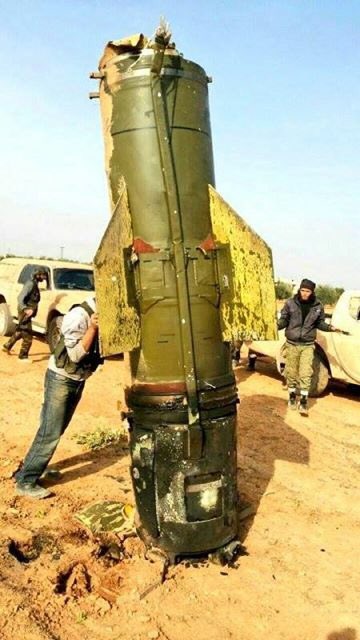
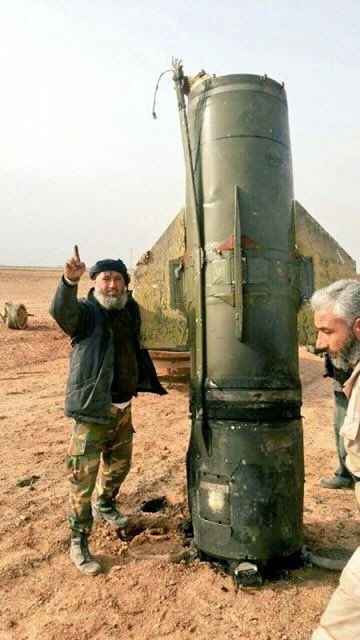
فورين بوليسي: كيف يجلب بوتين الحرب في سوريا إلى بلاده؟
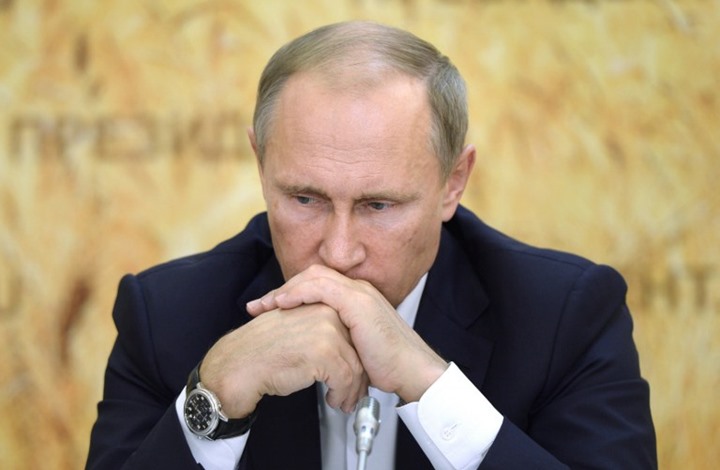
نشرت مجلة "فورين بوليسي" الأمريكية تقريرا للكاتب مارفين كلب، قال فيه إن الرئيس الروسي فلاديمير بوتين حوّل بتدخله العسكري في سوريا الكرملين مرة واحدة إلى مركز الدبلوماسية للشرق الأوسط، والرسالة كانت واضحة، وهي أن روسيا عادت قوة كبرى، وأن الحل لهذه الحرب المدمرة يمر عبر موسكو.
ويذكر التقرير أنه بعد حوالي شهر من دك معاقل الثوار المناوئين لنظام بشار الأسد، قام بوتين بدعوة الأسد إلى الكرملين، متسببا بتخمينات جديدة حول وجود صيغة حل من صناعة روسية للحرب في سوريا. ودهشت الولايات المتحدة، وبعد اجتماع واحد بين وزير الخارجية الأمريكي جون كيري ونظيره الروسي سيرغي لافروف، وافق كيري على دعوة حليف روسيا، إيران، لحضور جولة المفاوضات الجديدة بخصوص سوريا، التي حصلت في 30 تشرين الأول/ أكتوبر في فيينا.
ويتساءل الكاتب هل بإمكان بوتين النجاح حيث فشل الآخرون؟ ويرى أن ذلك ممكن، ولكنه غير متوقع، فقد فتح الرئيس عش دبابير في سوريا، والكل، بمن فيهم بوتين، يلدغ مرة تلو الأخرى.
وتجد المجلة أنه لدى تفحص مقامرة بوتين عن كثب، تكتشف أن ما ظهر وكأنه ورقة رابحة في البداية، هو في الواقع ورقة خاسرة بامتياز ولأسباب خاصة بروسيا، وهي تتعلق بحقيقة عادة ما تهمل بالرغم من أهميتها، وهي أن أكثر من 20 مليونا من عدد سكان روسيا الـ 144 مليونا هم من المسلمين السنة، وهم بالطبع يتعاطفون مع المسلمين السنة، الذين تقصفهم روسيا في سوريا. فأي حسابات خاطئة في سوريا قد تقوض قاعدة السلطة لبوتين في بلده.
ويبين التقرير أن الأمر لا يتوقف هنا، فلم يتوقف بوتين عند قصف الثوار السنة في سوريا، بل قام بإنشاء تحالف تقوده روسيا من القوى الشيعية في المنطقة إيران والعراق وسوريا، لتبادل المعلومات الاستخباراتية، ولضرب العدو السني معا. موضحا أن بوتين بهذا، وسواء كان مقصودا أم لا، يكون قد فتح حربا ضد العرب السنة، الذين تقودهم السعودية المتحالفة مع أمريكا.
ويلفت الكاتب إلى أن الرئيس الأمريكي باراك أوباما كان قد كرر مرارا أنه لا يريد حربا بالوكالة مع روسيا، ولكن هذا بالضبط ما بدأ يتبدى، فهذه المنطقة، التي تعاني من مرض الحروب المزمن والكراهية والانقسامات الدينية، أصبحت الآن أكثر اضطرابا، ويزيد ذلك تبلور حلفين روسي شيعي وأمريكي يدعمه السنة.
وتقول المجلة إنه بالنسبة لبوتين، فإن هناك تحدي وجود، وأن المعضلة تكمن في الديمغرافيا الروسية والتاريخ. مشيرة إلى أن معظم المسلمين الروس السنة يعيشون في شمال القوقاز، حيث كان العديد من الاضطرابات الإسلامية ضد الروس. فالشيشان شهدت منذ فترة ليست بعيدة حربين طاحنتين. وجارتها داغستان أيضا عبارة عن برميل بارود، كونها جزءا من الخلافة القوقازية التي يدعيها الجهاديون. ويلقي الشيوخ هناك خطبا تعد متعاطفة مع أهداف تنظيم الدولة، وقد استجاب حوالي 2400 مسلم روسي للدعوة، وهذا تطور يخيف بوتين كثيرا.
ويورد التقرير، الذي ترجمته "عربي21"، ما قاله الرئيس الروسي من فترة قريبة على محطة "سي بي إس": "أهم سبب جعل روسيا تدخل سوريا هو التهديد بأن يعودوا إلينا". لافتا إلى أن الكابوس الذي يعاني منه بوتين هو عندما يتدرب هؤلاء المسلمون على تكتيكات الإرهاب الحديث، ويعودون إلى روسيا لتفجير الطائرات والقطارات والمسارج والمدارس، كما كانوا يفعلون سابقا. ويضيف بوتين: "من الأفضل لنا أن نساعد الأسد في حربه على الأرض السورية".
وينوه الكاتب إلى أن الخوف من الإرهاب الإسلامي يتغلغل في التاريخ الروسي. وفي القرن التاسع عشر كتب تولستوي وغيره من الكتاب الروس قصصا حول الجيش الروسي الذي يحارب المجاهدين الإسلاميين من شمال القوقاز. وكان هذا هو الموضوع المشترك لكثير من الكتب، الضابط السلافي يحارب المارق الإسلامي. الأول يقاتل لحماية المدنية المسيحية، والآخر يقاتل لاجتثاثها.
وتجد المجلة أنه من الطريف أن يتم ترديد صدى الموضوع ذاته اليوم على التلفزيون الروسي، فمثلا شرح المذيع التلفزيوني الشهير ديمتري كيسيليوف، الذي يعجب بوتين أسلوبه الناري، سبب القتال الروسي في سوريا في برنامجة الأسبوعي، فقال: "إن روسيا تنقذ أوروبا من البربرية للمرة الرابعة". ثم سأل: أنقذنا أوروبا للمرة الرابعة؟ وأجاب: "دعونا نعد.. المغول، نابليون، هتلر واليوم الدولة الإسلامية".
ويشير التقرير إلى أن علاقات الكرملين كانت سيئة مع المسلمين عدة مرات في القرن الماضي، فخلال الحرب العالمية الثانية تم نفي مسلمي القرم إلى سيبيريا؛ لأنه لا يمكن الثقة بهم ليحاربوا ضد النازيين. وبعد أن تفكك الاتحاد السوفييتي عام 1991 رجا الرئيس الروسي بوريس يلتسين أوكرانيا أن تبقى في الاتحاد؛ بحجة أنه "لا يمكن لنا أن نكون في وضع حيث تقف روسيا وبلاروسيا كونهما صوتين سلافيين ضد خمسة أصوات لدول إسلامية".
ويفيد الكاتب بأن كثيرا من الروسيين يتذكرون باسماتشي وسط آسيا، وهم قبيلة مقاتلة تشبه تنظيم الدولة، وشكلت خلافة في عشرينيات القرن الماضي، وثاروا ضد الهيمنة الروسية. وقام الجيش الروسي بذبحهم دون رحمة، بعد عقد من الزمان، ولكن رسالتهم الإسلامية بدأت تحرك كثيرا من الشباب المسلم العاطل عن العمل في وسط آسيا، ما يشكل خطرا مباشرا على روسيا.
وتعتقد المجلة أن بوتين قلق من هذا الأمر، حيث أقام قبل شهر مناورات عسكرية لـ 100 ألف جندي في وسط آسيا. وحذر من أن هناك ما يقدر بحوالي سبعة آلاف مسلم من شمال القوقاز ووسط آسيا يقاتلون مع تنظيم الدولة، وقد يأتون بالإرهاب إلى مناطقهم عن طريق أفغانستان، وقد يأتون عن طريق سوريا والعراق.
ويوضح التقرير أن أشباح الإرهاب الإسلامي تطارد بوتين، مثل ما طاردت غيره ممن سبقوه، ويرى في هذا الإرهاب تهديدا لاستقرار روسيا كدولة، وفي نظره فإنه تجب محاربته والقضاء عليه، سواء كان في روسيا أو في سوريا. ويؤكد الكاتب أن التاريخ سيثبت أنه سيقصر هنا وهناك، وسيعاني من تبعات سياسية ودبلوماسية.
ويقول الكاتب إن لا أحد يستطيع إخفاء الحقيقة بأن روسيا في حلف شبه مقدس مع الشيعة في إيران والعراق وسوريا لمحاربة السنة في سوريا، وتعرض هذه الهجمات على التلفزيون الروسي مرارا. ويقوم الصحافيون الموالون للكرملين، الذين غطوا أحداث أوكرانيا، بتغطية أحداث سوريا، المراسلون أنغسهم ورسالة الانتصار ذاتها، التي ترفع من مستوى الفخر بين الروس، وترفع من مستوى القلق والألم بين المسلمين السنة هناك.
ويضيف أن "المسلمين السنة في روسيا يقلقهم ويحيرهم ما يرونه ويسمعونه. وحتى لو لم تدخل روسيا في الحرب السورية فإن ثورة على شاكلة ما حدث في الشيشان كانت تهديدا يلوح في الأفق، والآن فإن ثورة يقوم بها المسلمون الغاضبون أصبحت أمرا أقرب إلى الواقع، وفي الواقع قد تكون مجرد مسألة وقت".
وتخلص "فورين بوليسي" إلى أن مقامرة بوتين في سوريا فيها مخاطرة كبيرة، مشيرة إلى أنه قد يكون تسبب في تنفير المسلمين الروس، وحرض على العنف الذي كان يقاتل ضده.
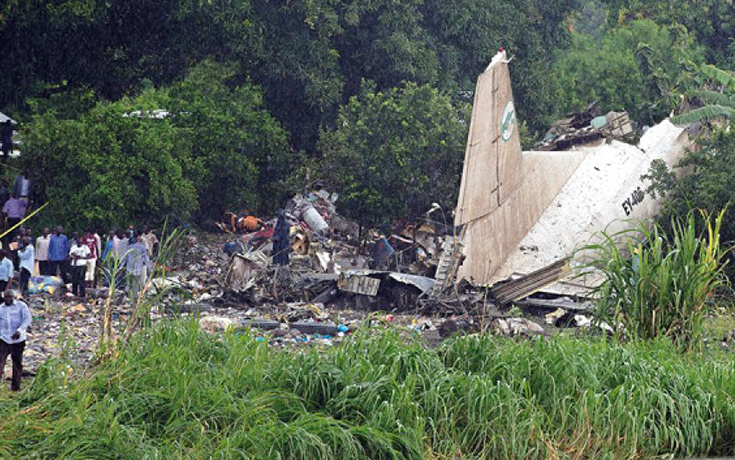
اسقاط طائرة شحن روسيه في السودان... 46 قتلوا... معظمهم مدنيين ع الأرض
British spies have uncovered evidence that suggests a bomb was smuggled into the hold of the Russian jet that crashed in Egypt, killing 224 people.

UK intelligence found evidence of the plot in intercepts picked up as part of a review of material carried out in the wake of the 31 October disaster, Sky News understands.
The discovery by GCHQ prompted Britain to dispatch experts to Sharm el Sheikh to review security at the airport - leading to the suspension of all flights to and from the resort.

Sky's Foreign Affairs Editor Sam Kiley said: "Following the downing of the aircraft, British intelligence went back over existing material and began to see some kind of signal that indicated a bomb had been placed on this aircraft."
The discovery has created a diplomatic row with Egypt and Russia, who want to see the intelligence, having previously played down Islamic State claims of responsibility.
Kiley said: "The interesting thing is that the intelligence was missed in the first place, which will anger the Russians in particular.
"The Russians and Egyptians are wanting the British to share this intelligence with them. The British are resisting that very strongly - quite often they've said they'll share the conclusions but not the raw material because access to the raw material will reveal their capabilities."
Flights from Sharm to the UK will resume later in the face of heightened security, including a ban on hold luggage for passengers, which will be transported separately.
Planes carrying British tourists will depart the UK with the holds "sealed up" and security to ensure they stay that way while in Egypt, the Independent's travel expert Simon Calder has reported.
There have been concerns over lax security at the airport after a British holidaymaker told Sky News that he had jumped queues and baggage checks by paying just £20.
EasyJet, Thomson Airways, British Airways, Thomas Cook and Monarch all announced they will operate services to the UK.
Tourists in Egypt said talk of a terrorist attack had caused "panic".
West Londoner Lauryn Mudzimu, 35, said: "Some people are due to leave on the 12th, but they have gone to the airport.
"A lot of people have checked out and left their hotels. They were in a panic saying they have to go.
"The locals are in panic as well, and that's affecting business and work."
Dutch airline KLM has announced passengers on its flight from Cairo to Amsterdam on Friday will only be allowed to travel with hand luggage amid security concerns.
The Government gave the go-ahead to the flights after a day of intense talks with Egyptian leaders and the airlines.
Egypt's President Abdel Fattah al Sisi said he was "ready to co-operate" to keep foreign tourists safe following talks with Mr Cameron at Downing Street.
Mr Sisi told reporters afterwards that British experts had examined security at Egyptian airports 10 months ago and found the arrangements were "good enough" - though No 10 reportedly confirmed there had been security concerns about Sharm.
Transport Secretary Patrick McLoughlin defended the government's decision not to share those concerns with tourists.
He told Sky News: "Obviously things changed very dramatically following last Saturday's jet crash and we need to obviously respond to that and I think with the action we've taken people can be in no doubt that we will respond and we will respond very quickly."
Mr McLoughlin said there was a "high probability" that a bomb in the hold downed the Metrojet plane and the Government was waiting for "final confirmation".
Downing Street said: "Our utmost priority is to make sure we have all the right measures in place to ensure that British citizens can return safely to the UK.
"Outbound flights from the UK to Sharm el Sheikh remain suspended and the Foreign Office continues to advise against all but essential travel by air to or from Sharm el Sheikh airport but we are continuing to work with the Egyptians to get back to normal service as soon as possible."
Russian President Vladimir Putin has suggested Britain acted too hastily in cancelling the flights before the results of an investigation into the crash were known.
President Barack Obama has said the US is taking "very seriously" the possibility that a bomb caused the disaster, echoing earlier comments from officials that such a prospect was not being ruled out.
نمط تحليق غريب للطائرة الروسية قبل تحطمها بسيناء
3 تشرين الثاني 2015 الساعة 14:55
نيويورك، الولايات المتحدة الأمريكية (CNN)—قالت ليس آبيند، محللة شؤون الملاحة الجوية في شبكة CNN إن هناك معلومات غير مؤكدة تشير إلى قيام طائرة "ميتروجت" الروسية قامت بنمط تحليق غريب.
وبينت آبيند لـCNN: "اطلعت على معلومات للرادار أظهرت أن الطائرة حلقت على ارتفاع 33.500 ألف قدم، ثم انخفضت إلى 28 ألف قدم بصورة سريعة، إلى جانب أن سرعتها تراجعت من 400 عقدة إلى 62 عقدة، وعليه لابد من وجود أمر ما حدث."
وتابعت قائلة: "أحد الأمور الملفتة أيضا هو أن الطائرة انخفضت بصورة عامودية وبسرعة تصل إلى 7000 قدم في الدقيقة ومن ثم أظهرت القراءات أن الطائرة صعدت مرة أخرى وبسرعة تصل إلى 8000 قدم في الدقيقة!"
ولفتت المحللة إلى "احتمال حدوث مشكلة في حركة الطائرة الانسيابية أو ما يُعرف بـ(Aerodynamic stall) وحتى إن أصاب هذا الاحتمال، فإن السؤال يبقى هل حدث ذلك بسبب عوامل داخلية أم عوامل خارجية؟"
سي ان ان
THE CRASH
A U.S. satellite that was over Sinai at the time of the crash detected a heat flash, according to a U.S. official directly familiar with the latest information in the investigation. U.S. intelligence and military officials are analyzing the data to determine whether the flash occurred in midair or on the ground and what that can tell them about what happened to the plane, the official said.
Analysts say heat flashes could be tied to a range of possibilities: a missile firing, a bomb blast, a malfunctioning engine exploding, a structural problem causing a fire on the plane or wreckage hitting the ground.
"The number of heat signatures is crucial," said CNN aviation analyst Miles O'Brien. "If, in fact, only one was detected, that in some respects might steer one away from a missile launch and onto some idea of an explosion onboard the aircraft."
A top Russian aviation official has said the plane broke apart in midair.
Alexander Smirnov, a Metrojet official, told reporters in Moscow on Monday the airline had ruled out technical problems and human error. Protection systems on the plane would have prevented it from crashing, he said, even if there were major errors in the pilot's control equipment.
"Therefore the only reason that could explain the plane's breaking up in the midair can be a certain impact, a purely mechanical (and/or) physical impact on (the) flying vessel," he said.
The vague comment made translation difficult, with some interpreting that the executive said an "external influence" caused the crash.
The head of the Russian Federal Air Transport Agency, however, quickly pushed back.
"It is completely premature to speak about the reasons of this, as there are not grounds. And I'd like to call on the aviation community to refrain from any premature conclusions," Transport Agency chief Alexander Neradko told the state-run Russian news agency Sputniknews.com.
Learning that the plane broke into pieces while in the air helps reduce the list of possible causes of the crash, but there are still plenty of scenarios, said CNN aviation analyst Peter Goelz.
THE PLANE
The A321-200 was built in 1997, and the airline company Kogalymavia, which flies under the name Metrojet, had been operating it since 2012, Airbus said. The aircraft had clocked around 56,000 flight hours over the course of nearly 21,000 flights, the plane maker said.
And so far, officials have said all its inspections were in order.
The aircraft passed a routine inspection before takeoff, Egyptian Airports Co. chief Adel Al-Mahjoob said Saturday.
According to the Aviation Safety Network, which tracks aircraft incidents, the same plane's tail struck a runway while landing in Cairo in 2001 and required repair. At the time, the aircraft was registered to the Lebanese carrier Middle East Airlines, registration records show.
Kogalymavia's Andrei Averyanov said the plane had been damaged in 2001, but had most recently been thoroughly checked for cracks in 2013. Not enough time had passed for major cracks to develop to a critical size since then, he said.
Smirnov said that he had personally flown the plane in recent months and that it was "pristine."
THE VICTIMS
There were 217 passengers and seven crew members on board Flight 9268. Of the passengers, 209 were Russian, four were Ukrainian and one was Belarusian. The citizenships of three other passengers are unknown.
Russian media reported that the disaster created a large number of orphans in Russia, as a lot of parents left their young children with relatives while they took vacations in Sharm el-Sheikh.
Most of the bodies retrieved at the crash site are intact, a medical source in Sinai told CNN on Monday, and showed no major burns.
So far, two flights carrying remains of victims have flown to Russia, according to the TASS news agency. The first flight carried 130 bodies and dozens of body fragments. It was unclear how many victims' remains were aboard the second flight, which landed in St. Petersburg early Tuesday.
THE INVESTIGATION
Egyptian President Abdel Fattah el-Sisi has promised Russian President Vladimir Putin that he will allow "the broadest possible participation of Russian experts in the investigation," according to the Kremlin, and Russian officials have joined their Egyptian counterparts at the crash scene. Putin has also ordered Russian Prime Minister Dmitry Medvedev to open an investigation, the Kremlin said.
Aviation investigators from France and Germany, the countries where the plane was manufactured, are also taking part.
The aircraft's engines were manufactured in the United States. If the plane's engines become a focus of the investigation, the U.S. National Transportation Safety Board will likely dispatch a team to Egypt as well, a U.S official with knowledge of the investigation said.
The plane's black boxes, which were recovered at the crash site Saturday, have not yet been read or decoded, Smirnov said.
THE REGION
Sharm el-Sheikh, where Flight 9268 began its journey, is a beach resort dotted with palm trees at the southern tip of the Sinai Peninsula. The plane crashed about 300 kilometers (185 miles) farther north, near a town called Housna, according to Egyptian authorities.
The Sinai Peninsula has been a battleground between ISIS-affiliated militants and Egyptian security forces. The conflict has killed hundreds of people.
The militants appeared to claim responsibility for bringing down the Russian passenger jet in a statement posted online Saturday, but officials in Egypt and Russia disputed it.
Mahjoob, the airport official, said there was no evidence of a terrorist attack. And Russian Transport Minister Maxim Sokolov said the claim that terrorists brought down the plane with an anti-aircraft missile "cannot be considered reliable," according to RIA Novosti.
The Egyptian military said militants in Sinai have shoulder-fired, anti-aircraft weapons that shoot only as high as 14,000 feet, far short of the more than 30,000 feet at which Flight 9268 was flying when it dropped off radar.
Kremlin spokesman Dimitry Peskov refused to discount terrorism, telling CNN's Matthew Chance on Monday that "only (the) investigation can rule out something."
Metrojet executives also said Monday that it was too early in the investigation to speculate or draw any conclusions. But Smirnov referred to purported footage of the crash posted by militants, saying: "Those images you have seen on the Internet, I think they are fake."
لغز #الطائرة_الروسية: أقمار صناعية رصدت وهج حراري بموقع الطائرة قبل سقوطها ! وتكهنات بانفجار محرك او نيران أو قنبلة.
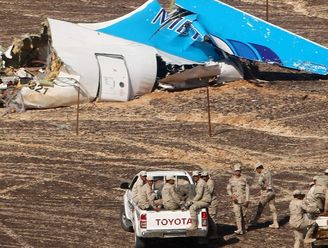
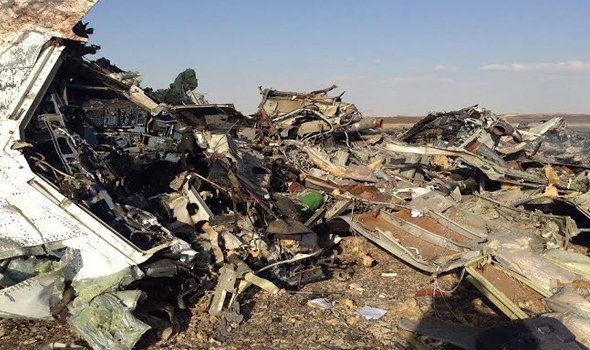
#حماة ما تم تحريره اليوم في #ريف_حماة حتى الآن
عطشان
أم حارتين
مداجم النداف
مزرعة الحسن
قبيبات أبو الهدى
تل الطويل
تل الصوان

احمد موفق زيدان ؛ موقع ديبكا الصهيوني : ٦ألوية ايرانية نخبوية تلقت هزيمة مذلة بحلب هي الاسوء منذ٣٦عاما كانت تحاول بدعم روسي السيطرة على حلب
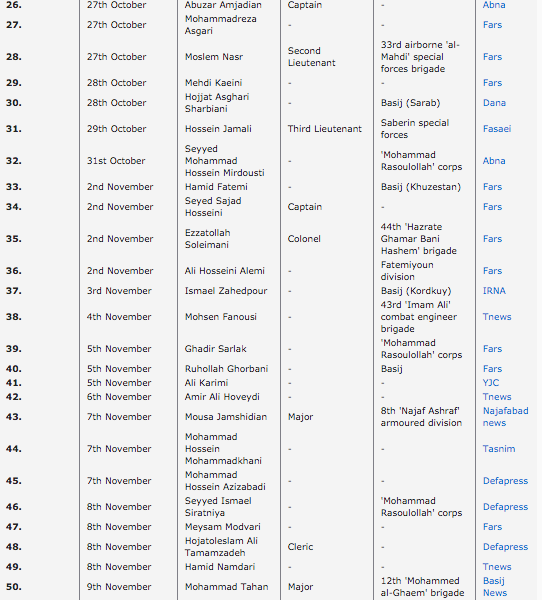




"داعش" مصرّ على التقدم في حمص رغماً عن روسيا: الخريطة مخيفة وماذا عن لبنان؟
.jpg)
| ٣ تشرين الثاني ٢٠١٥ |
| :: محمد نمر:: من يقرأ الخريطة ويطّلع على المواقع التي وصل إليها تنظيم "الدولة الاسلامية" في ريف حمص ونقاط الاشتباك هناك، سيشعر بأن الخطر بدأ يقترب من حدود لبنان الشمالية التي لا تخلو أساساً من تواجد عناصر "داعش"، خصوصاً في جرود القاع ورأس بعلبك. وبات واضحاً أن الطيران الروسي لم يستطع حتى اللحظة أن يكبح تقدّم "داعش" في سوريا، خصوصاً بعدما لاحظ المجتمع الدولي أن غالبية الضربات تستهدف المعارضة المعتدلة والاسلامية وتتعاطى برومانسية مع "داعش" الذي استغلّ الفرص ليسيطر على الأراضي. من حمص إلى لبنان بيبرس التلاوي ناشط سوري يهتمّ بمتابعة تطورات المعارك مع "داعش" في ريف حمص وتوسعها في المناطق الصحراوية، ويحدد مواقع النفط والآبار والغاز التي تسيطر عليها، وبحسب متابعته يعتبر أن تنظيم "الدولة الاسلامية يريد السيطرة على المنطقة الشرقية لحمص والاتجاه الى الجنوب للسيطرة على القصير، ومن ثم التوغل في اتجاه القلمون الشرقي من الجبال التي تمتد من القريتين ومهين حتى تصل إلى القلمون وبعدها سيستطيع "داعش" ان يدخل البلدات الحدودية مع لبنان لتصبح جزءاً من دولته المزعومة". وفي رأيه، فإن "هدف داعش الوصول الى العاصمة دمشق من جهة القلمون، ودخول لبنان من القصير، وهو يريد توسيع رقعة سيطرته، ويفكر عكس ما تفكر به باقي الفصائل في سوريا". وعلى الرغم من ذلك، لا يمكن قراءة المستقبل ويبقى الواقع في الميدان المؤشر الوحيد إلى نوايا "داعش" الذي يهتم في هذه الفترة بالسيطرة على أوتوستراد دمشق - حمص. وبدأ رحلته من القريتين فسيطر على الحفر وأخيراً على مهين وبدأ برمي إرهابه على صدد التي يسكنها آلاف المسيحيين. ويتوقع التلاوي أن "يسيطر التنظيم عليها لأن قوته كبيرة وعناصر قوات النظام باتوا يهربون عند سماع اسم التنظيم"، مشيراً إلى أن "90 في المئة من سكان صدد مسيحيون، ويبلغ عدد سكانها نحو 20 ألفًا، والسيطرة عليها ستساعد التنظيم على التقدم باتجاه حسياء، كما أنه سيسطر على أبار الغاز المحيطة بصدد". كيف بدأت المعركة؟ بعد سيطرة تنظيم الدولة على مدينة تدمر وتمدده الى مدينة القريتين في ريف حمص الجنوبي - الشرقي بدأ التنظيم التجهيز لمعركة جديدة، وكانت بلدة مهين الهدف التالي، ويوضح الناشط السوري من حمص بدوي المغربل لـ"النهار" أن "مهين بلدة تبعد عن المدينة حوالي 85 كيلومتراً ويتجاوز عدد سكانها 30 ألف نسمة، بعد نزوح عدد كبير من أهالي القريتين إليها. وهي تقع غرب القريتين وشرق صدد وجنوب حوارين ومن جنوبها توجد سلسلة جبال تمتد حتى القلمون"، ويضيف: "موقع مهين يعطيها أهمية استراتيجية لقربها من الطريق الدولي الواصل بين دمشق -حمص والساحل، وسكانها من المسلمين السنّة". مهين بوابة صدد منذ السيطرة على مدينة القصير كانت مهين تحت قبضة النظام السوري، فهي بحسب المغربل "بوابة صدد وبالقرب منها مستودعات للأسلحة سيطر عليها تنظيم الدولة الاثنين. وبدأ التنظيم هجومًا على مهين بسيارة مفخّخة استهدف فيها حاجز الأعلاف، ومن ثم دخل عناصر التنظيم البلدة وقتلوا عدداً من ميليشيات النظام، وسيطروا عليها بعد اشتباكات لم تدم طويلاً، وتعرضت البلدة للقصف بالطيران وبدأ نزوح الأهالي الى أماكن مختلفة منها صدد". هذه الأخيرة لن تسلم من إرهاب "داعش"، إذ سارع إلى "إرسال سيارة مفخخة اليها ضربت أحد حواجزها، وكانت أشبه برسالة ان صدد هي المدينة القادمة"، مشيراً إلى أن "موقع هذه المدينة له اهميته التاريخية والاستراتيجية، وفي حال سيطر التنظيم على صدد فانه سيصل الى حسياء والمدينة الصناعية الواقعة على الاوتستراد الدولي، ما يؤدي الى قطعه، خصوصاً بعد الوصول الى قارة ودير عطية، فتحاصر من هناك العاصمة دمشق، فضلاً عن أنها ستشكل حينها خطرًا على لبنان، لأن التنظيم يعتبر أن حمص هي بوابة لبنان". سريان أرثوذكس في صدد اما الأهمية التاريخية لصدد فتعود بحسب المغربل إلى "أن سكانها يعتنقون المسيحية ويتبعون للكرسي الأنطاكي وهم سريان ارثوذكس، ولهذا تعتبر صدد ذات حجم دولي". ويقول المغربل: "التنظيم يجهز لهذه العملية منذ زمن ويدرس المنطقة بمساعدة خلاياه، واستغل فرصة انشغال جيش الاسد في محاولاته الفاشلة لاقتحام ريف حمص الشمالي ليبدأ بالتنفيذ، وعلى الرغم من أن الطيران الروسي والنظام يقصفان في شكل يومي مناطق سيطرة التنظيم، إلا أن الغريب أن جيش الأسد حشد قواه على ريف حمص الشمالي وهي ثغرة كسبها التنظيم، واختار المناطق الشرقية ذات الأرض الوعرة والصحراوية التي يستطيع التحرك فيها بحسب تدريباته وقوته". البريج و"حزب الله" لا تزال الاشتباكات مستمرّة على أطراف مهين والنزوح مستمراً، وكان لافتاً وصول "داعش" إلى منطقة البريج التابعة لحمص وتقع على الطريق السريع حمص - دمشق لناحية حسياء، وتقول الناشطة الاعلامية نجوى القصير لـ"النهار": "وصل عناصر "داعش" إلى البريج وسيطروا على نقاط هناك، وبقي حوالي 10 كم للوصول إلى الاوتوستراد وبات واضحاً انهم يريدون قطع طريق دمشق - حمص". الابتعاد عن لبنان؟ سكان البريج ينزحون نحو قارة ودير عطية، وترجح بأن "أي تحرك سيكون في اتجاه جوسية والقصير كما حصل في المرة السابقة، واذا تمت السيطرة على صدد سيكون من السهل الوصول الى قارة، خصوصاً بعدما سحب النظام قواته من قارة للمؤازرة"، وذكرت بأن "صدد شهدت عملية تفجير ولم يستطع التنظيم أن يدخل إليها حتى الآن، وربما توقف بسبب ضربات الطيران الروسي، لأن عبور هذه المدينة المسيحية يعني الوصول بسهولة الى الاوتوستراد وبعدها إلى قارة"، لافتة إلى أن "النظام سحب تعزيزات كبيرة الى صدد كي لا يخسرها". القصير تستبعد محاولة دخول "داعش" إلى لبنان، وتقول: "أستبعد ذلك، لأن التابعين للتنظيم في الجرود القريبة من لبنان، هدفهم الوصول الى القصير والابتعاد كليا عن لبنان، كما ان في الجرود فصائل كثيرة ضد التنظيم، ولا يمكنهم التحرك بمفردهم في اتجاه لبنان". الجرود و"داعش" الناشط السوري زكريا الشامي الذي يتابع حال الجرود لفت إلى أن "حزب الله كان قد أمن خطوطه الدفاعية في البريج، ودورياته لا تتوقف في هذه المناطق، خصوصاً أن التلال المحيطة بالبريج والمدينة نفسها هي النقطة الفاصلة بين القلمون الشرقي والقلمون الغربي فكانت المفاجئة للحزب ببدء هجوم داعش صباح الأحد وتمت المواجهة بين الطرفين فاتخذ الحزب خيار الانسحاب لوقف الهجوم"، مشيراً إلى أن "السيطرة على صدد سيعرض ثكنات الحزب في لبنان والتلال الاستراتيجية الذي يحتلها للخطر، وبالتالي فإن القطع العسكرية التي اتخذها حزب الله كمراكز دائمة له في قارة والنبك ستكون في مرمى التنظيم". وفي شأن امكانية وقوع معركة بين "داعش" وفصائل الجرود الأخرى، يقول: "الفصائل الى الآن لم تصدر اي بيان او ما شابه حول تطورات الوضع، لكني اظن ان ما يقوم به تنظيم الدولة من استهداف للحزب وقوات النظام لن يجبر احدًا على ذلك، وربما سيكون الأمر مشابهاً لما حصل في حلب أي التهدئة". أما بيبرس التلاوي فهو على قناعة بأن "داعش يمكنها أن تسيطر على صدد ويتوجه بعدها إلى حسياء"، مذكراً بأن "التنظيم أرسل سيارة مفخخة انفجرت عند الباب الرئيسي للبلدة وتبعها هجوم من المقاتلين وسيطروا على خمس نقاط في الجهة الشرقية للبلدة". اشتباكات التلال وعن حال الاشتباكات، يقول الصحافي في "Syira direct" أسامة أبو زيد لـ"النهار" إن "الاشتباكات قرب صدد متواصلة لكنها ليست في قلب صدد، وتتركز في محيط البلدة على تلال الحزم الثانية، أما التلال المقابلة والأولى يتمركز الجيش السوري فيها وجميعها خارج صدد". ويضيف: "لا تزال المساعي للسيطرة على صدد غير جدية ربما لأنه يريد التمركز في مهين وتحصين نفسه فيها، ولأنها أكبر من صدد من حيث المساحة". خطر على لبنان؟ وفي شأن الخطورة على لبنان في حال سلك "داعش" خط أهدافه، يقول أبو زيد: "لا تزال الخطورة بعيدة، وصعبة لأنه في حال سيطر على صدد ستكون العقبات كثيرة، كالمدينة الصناعية في حسياء الواقعة على طريق حمص - دمشق، وجبل الصوانة، كما هناك العديد من القطع العسكرية للنظام السوري"، ويضيف: "لا يرتبط الموضوع الآن بخطر على لبنان أو ما شابه والموضوع لا يزال بعيدا، كما انه من الصعب السيطرة على المنطقة الصحراوية هناك من دون تواجد عمراني، لهذا فإن غاية داعش أولاً قطع طريق حمص - دمشق"، وعلى الرغم من ذلك يشير أبو زيد إلى أن "هم داعش اليوم هو صدد وبعدها الجبل أو الحسيا، وفي حال نجح في السيطرة عليهما، فقد يكون الهجوم حينها على جوسية القريبة من الحدود اللبنانية"، مذكراً بأن "تقارير صحافية عدة تحدّثت في فترة سابقة عن هجوم خاطف لداعش على جوسيه، لكن الفشل جاء بسبب عدم القدرة على السيطرة على جوسية والحدود، ولا يمكنه أن يؤمن الدعم الكامل لنفسه في المنطقة، وفي حال سيطر على حسياء وطريق دمشق-حمص بالتأكيد سيغذي نفوذه بالقلمون بالامداد العسكري، وهنا يمكن القول أن لبنان سيصبح في خطر كبير، لأن الامداد سيكون من العراق إلى لبنان". |
| المصدر : النهار |
яαвιн Retweeted
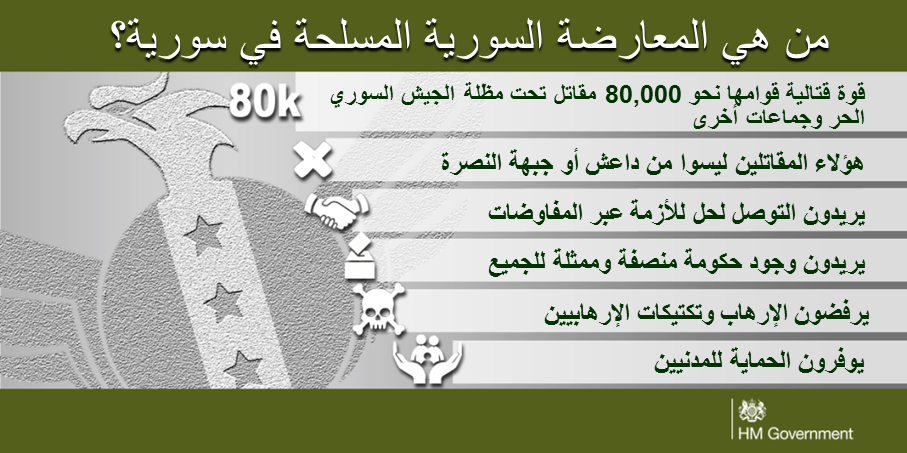
العثور على ناشط مناهض لـ"داعش" وصديقه مقطوعي الرأس في تركيا
المصدر: "أ ف ب"
30 تشرين الأول 2015 | 13:33
عُثر صباح الجمعة على ناشط مناهض لتنظيم #الدولة_الاسلامية وصديقه مقطوعي الرأس داخل منزل في جنوب #تركيا، وفق ما اكد ناشط مؤسس لحملة "الرقة تذبح بصمت". وقال "ابو محمد" عبر الانترنت "تم العثور على ابراهيم عبد القادر وهو احد اعضاء فريقنا وصديقه فارس حمادي مقطوعي الراس في منزل الاخير في مدينة اورفا" التركية. واتهمت حملة "الرقة تذبح بصمت" التي توثق انتهاكات تنظيم الدولة الاسلامية في شمال سوريا، عبر صفحتها على #فايسبوك، التنظيم بالوقوف خلف قتل الرجلين.
عُثر صباح الجمعة على ناشط مناهض لتنظيم #الدولة_الاسلامية وصديقه مقطوعي الرأس داخل منزل في جنوب #تركيا، وفق ما اكد ناشط مؤسس لحملة "الرقة تذبح بصمت". وقال "ابو محمد" عبر الانترنت "تم العثور على ابراهيم عبد القادر وهو احد اعضاء فريقنا وصديقه فارس حمادي مقطوعي الراس في منزل الاخير في مدينة اورفا" التركية. واتهمت حملة "الرقة تذبح بصمت" التي توثق انتهاكات تنظيم الدولة الاسلامية في شمال سوريا، عبر صفحتها على #فايسبوك، التنظيم بالوقوف خلف قتل الرجلين.
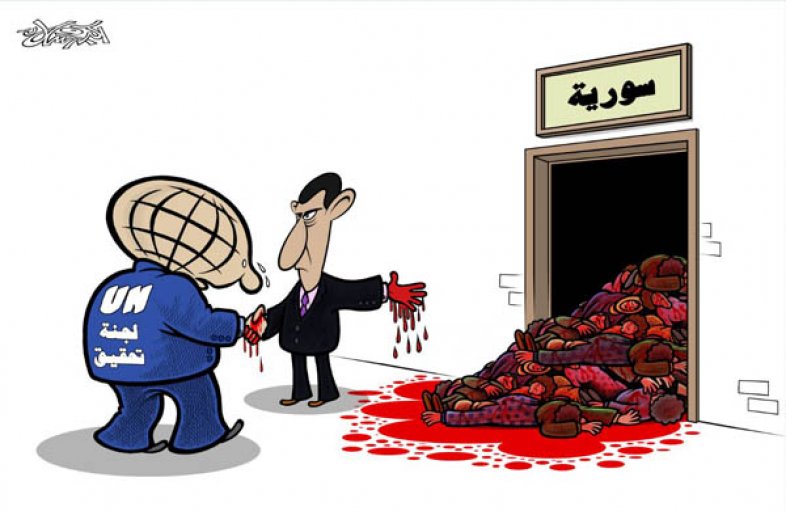
لماذا تعد سنجار مهمة في سلسلة القتال ضد "داعش"؟
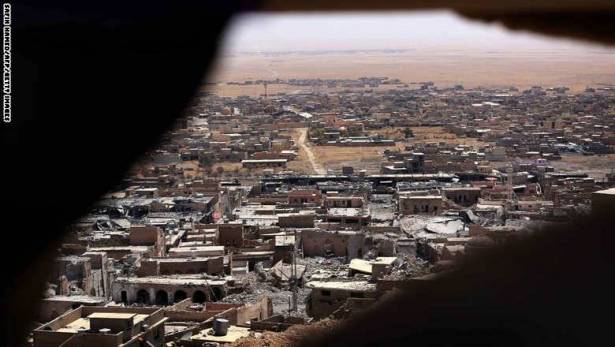
أطلقت القوات الكردية بدعم جوي من قوات التحالف التي تقودها الولايات المتحدة حملة عسكرية لاستعادة بلدة سنجار العراقية من تنظيم الدولة الإسلامية في العراق والشام أو "داعش."
وتعتبر استعادة سنجار خطورة كبيرة باتجاه تقسيم "دولة الخلافة" التي يدعي "داعش" تأسيسها في المنطقة.
فالشريان الذي يمر عبر سنجار يعد نقطة وصل بين مدينة الموصل العراقية، التي يفتخر "داعش" بسيطرته عليها، وبين المدن التي يحكم التنظيم سيطرته عليها في سوريا، لكن هذا الطريق يعد خط النجاة أيضاً لتأمين المساعدات لحوالي 1.5 مليون شخص ممن يسكنون الموصل، في وقت بدأت فيه الأسعار بالارتفاع وتأتي تقارير من ناشطين بوجود مجاعات.
ويقول العميد بالجيش الأمريكي والمحلل العسكري لـ CNN، مارك هيرتلينغ: "إن استعادة سنجار ليست فقط بسبب النتائج الانتصارية بل القدرة على التحكم بخطوط المساعدات القادمة للتنظيم.. إنها نقطة مهمة للمواجهات المستقبلية."
العملية ستشمل 7500 عنصر من البشمرغة التابعة للقوات الكردية، والتي ستهاجم البلدة من ثلاث جهات لإحكام السيطرة على خطوط التغذية للمدينة، وفقاً لما ذكره مجلس أمن إقليم كردستان، الخميس.
مهمة صعبة
قبل إصرارهم على استعادة سنجار، أشارت القوات الكردية إلى أن هذه المهمة لن تكون سهلة، إذ يقدر القادة الأكراد احتمالية وجود 600 عنصر من "داعش" داخل سنجار ومن المرجح أن يموتوا فيها، بالإضافة إلى الدعم الذي حظي به التنظيم مؤخراً، والذي يرجح بأنه سيساعد برفع أعداد عناصره ومواجهة قوات البشمرغة لمئات الأفخاخ والألغام الأرضية.
قبل إصرارهم على استعادة سنجار، أشارت القوات الكردية إلى أن هذه المهمة لن تكون سهلة، إذ يقدر القادة الأكراد احتمالية وجود 600 عنصر من "داعش" داخل سنجار ومن المرجح أن يموتوا فيها، بالإضافة إلى الدعم الذي حظي به التنظيم مؤخراً، والذي يرجح بأنه سيساعد برفع أعداد عناصره ومواجهة قوات البشمرغة لمئات الأفخاخ والألغام الأرضية.
"ستكون العملية بطيئة عند دخول قوات البشمرغة للبلدة،" وفقاً لما يراه المحلل العسكري أيضاً لدى CNN، المقدم ريك فراكونا، مضيفاً: "سيتوجب عليهم إنهاء المعركة تدريجياً بالسير من منزل لآخر وشارع بشارع، ستكون مهمة صعبة للغاية."
أكثر من عام في ظل "داعش"
راقب العالم بذعر العام الماضي، عندما تجمع أكثر من 50 ألف أيزيدي على جبل سنجار هرباً من مجازر "داعش"، في وقت ذبح فيه 5000 رجل وصبي في سنجار والقرى التابعة لها، وفقاً للإحصائيات التابعة للأمم المتحدة، بالتزامن مع بيع نساء الأيزيديين وبناتهم بأسواق العبيد.
راقب العالم بذعر العام الماضي، عندما تجمع أكثر من 50 ألف أيزيدي على جبل سنجار هرباً من مجازر "داعش"، في وقت ذبح فيه 5000 رجل وصبي في سنجار والقرى التابعة لها، وفقاً للإحصائيات التابعة للأمم المتحدة، بالتزامن مع بيع نساء الأيزيديين وبناتهم بأسواق العبيد.
ومنذ ذلك الوقت تحولت سنجار إلى نقطة فوضوية مليئة بالمباني المهدمة التي يقطنها عدة مئات من عناصر "داعش" الذين سيواجهون قوات البشمرغة الكردية.
لكن هنالك أحاديث كثيرة اليوم حول استعادة البلدة، والآن تجمع أكثر من 5000 مقاتل أيزيدي تحت قيادة البشمرغة للخوض في المعركة ضد "داعش"، لكن معظمهم مزارعون وتقل لديهم الخبرة العسكرية.
تعاون الجيران
يعتنق الأيزيديون إحدى أقدم الديانات التوحيدية في العالم، وهم فئة قليلة العدد، وديانتهم وجدت قبل قدوم الإسلام وهي مستمدة من المسيحية واليهويدية وديانة قديمة توحيدية أخرى اسمها "الزرداشتية"، وبعيون "داعش" هم كفار.
يعتنق الأيزيديون إحدى أقدم الديانات التوحيدية في العالم، وهم فئة قليلة العدد، وديانتهم وجدت قبل قدوم الإسلام وهي مستمدة من المسيحية واليهويدية وديانة قديمة توحيدية أخرى اسمها "الزرداشتية"، وبعيون "داعش" هم كفار.
عاش الأيزيديون إلى جانب الأكراد طوال آلاف السنين وهم جيران تربطهم علاقة طيبة، أما الأكراد فهم من المسلمين السنة، الذين يملكون لغة وثقافة خاصة بهم، ويعيشون في إقليم شمال العراق، لكن الموطن الرئيسي للأكراد يبلغ أجزاءً من إيران وتركيا وأرمينيا وسوريا.
وفي سنوني، القرية العراقية التي تقع بظل جبل سنجار تجمعت قوات البشمرغة لنصب مخيم وبدأ المدنيون من الأيزيديين بالتحضير للعودة إلى موطنهم ففي كلام لهم مع CNN الأسبوع الماضي، تحلفوا باستعادة سنجار والانتقام من "داعش".
وخلال هذا الشهر، بدأ إيقاع الهجمات الجوية ضد مواقع تمركز "داعش" داخل البلدة وخارجها بالتصاعد.
سي ان ان
«أبو طاقية» نفى لـ«الأخبار» مقتل الشيخ عثمان منصور: الانفجار وقع أثناء عقد قران http://fb.me/S8nfLleM

الـmtv: عقد قران كان يجرى داخل مكتب هيئة علماء القلمون ما أسفر عن مقتل العروسين وثلاثة من ذويهم إضافة الى 3 قتلى نقلت جثثهم الى مستشفى " ...
انفجار عرسال: 5 قتلى و6 جرحى بينهم رئيس هيئة علماء القلمون http://janoubia.com/2015/11/05/%d8%a7%d9%86%d9%81%d8%ac%d8%a7%d8%b1-%d8%b9%d8%b1%d8%b3%d8%a7%d9%84-5-%d9%82%d8%aa%d9%84%d9%89-%d9%886-%d8%ac%d8%b1%d8%ad%d9%89-%d8%a8%d9%8a%d9%86%d9%87%d9%85-%d8%b1%d8%a6%d9%8a%d8%b3-%d9%87%d9%8a/ الشيخ عثمان منصور…
اللعاجل
انفجار ضخم في مدينة عرسال اللبنانية استهدف مقر هيئة علماء القلمون أدى إلى استشهاد ١٠ إلى الآن

صحيفة السياسة الكويتية
أوساط "الجيش الحر" : "قيادة حزب الله ستتعرض لعمل مؤلم جداً يثير الشارع الشيعي في بيروت والبقاع والجنوب، ويؤدي الى قطع الطرقات الدولية بين العاصمة والمناطق الأربع الاخرى، كما ستحدث انفجارات على طريق بيروت – المطار توقف الرحلات الجوية من لبنان وإليه".
أوساط "الجيش الحر" : "قيادة حزب الله ستتعرض لعمل مؤلم جداً يثير الشارع الشيعي في بيروت والبقاع والجنوب، ويؤدي الى قطع الطرقات الدولية بين العاصمة والمناطق الأربع الاخرى، كما ستحدث انفجارات على طريق بيروت – المطار توقف الرحلات الجوية من لبنان وإليه".

أكثر من 160 متطوعا يقومون منذ الثامنة صباحا باستقبال، فرز وتوضيب التبرعات في #ساحة_الشهداء
#حملة_دفى
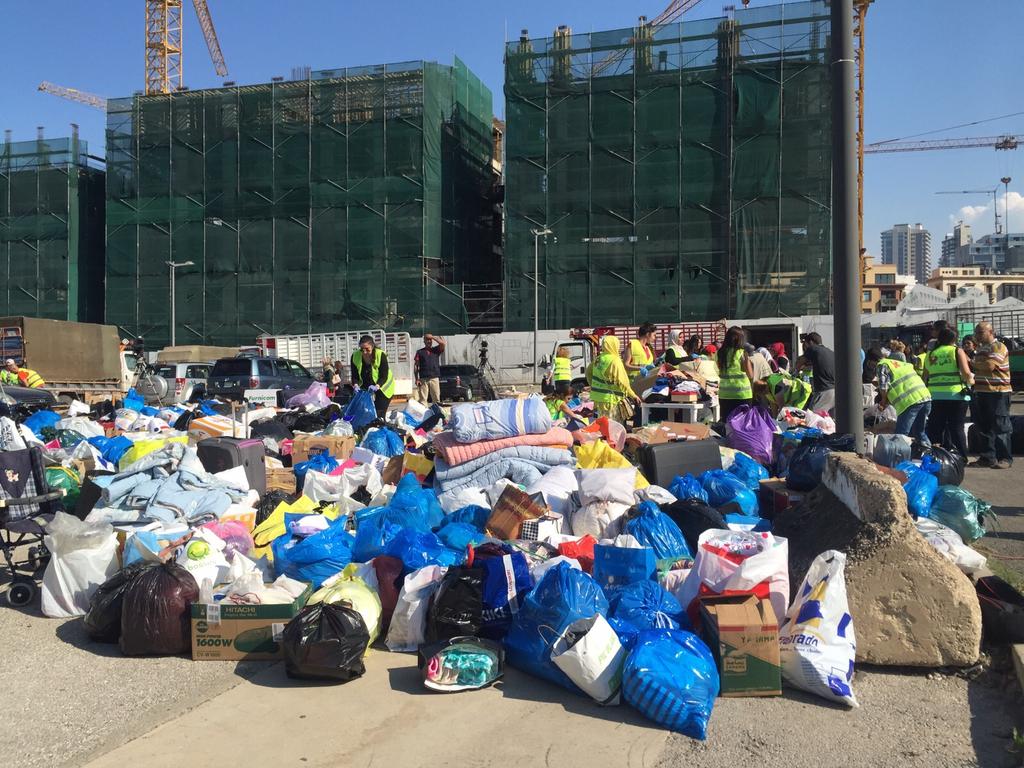
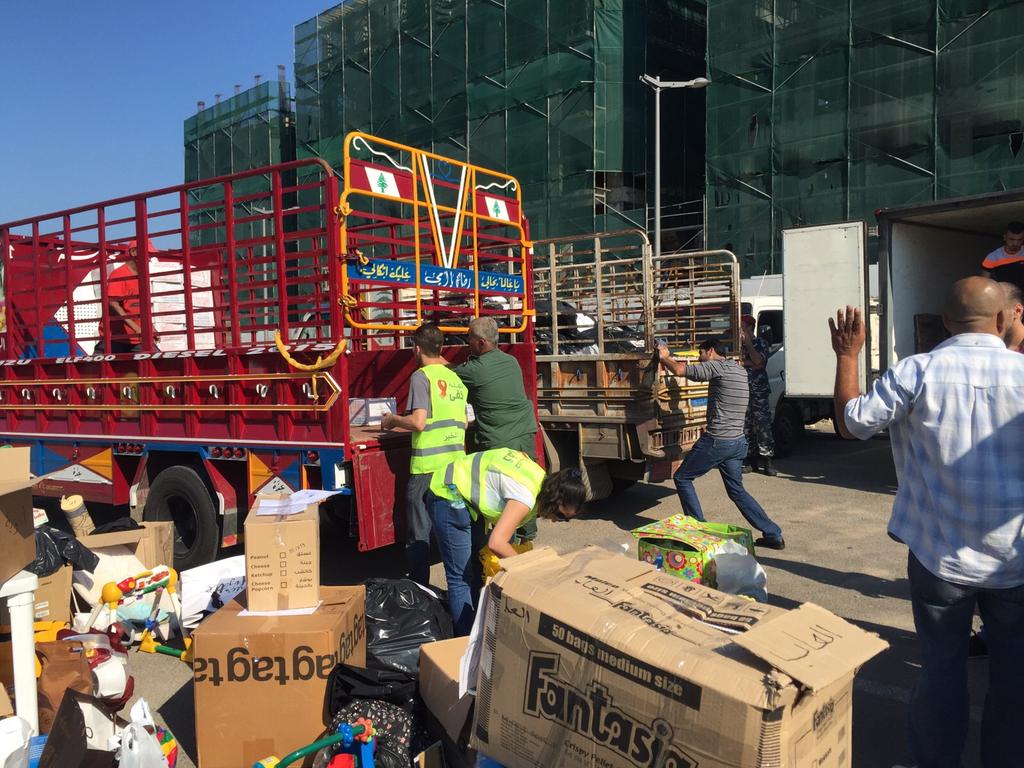
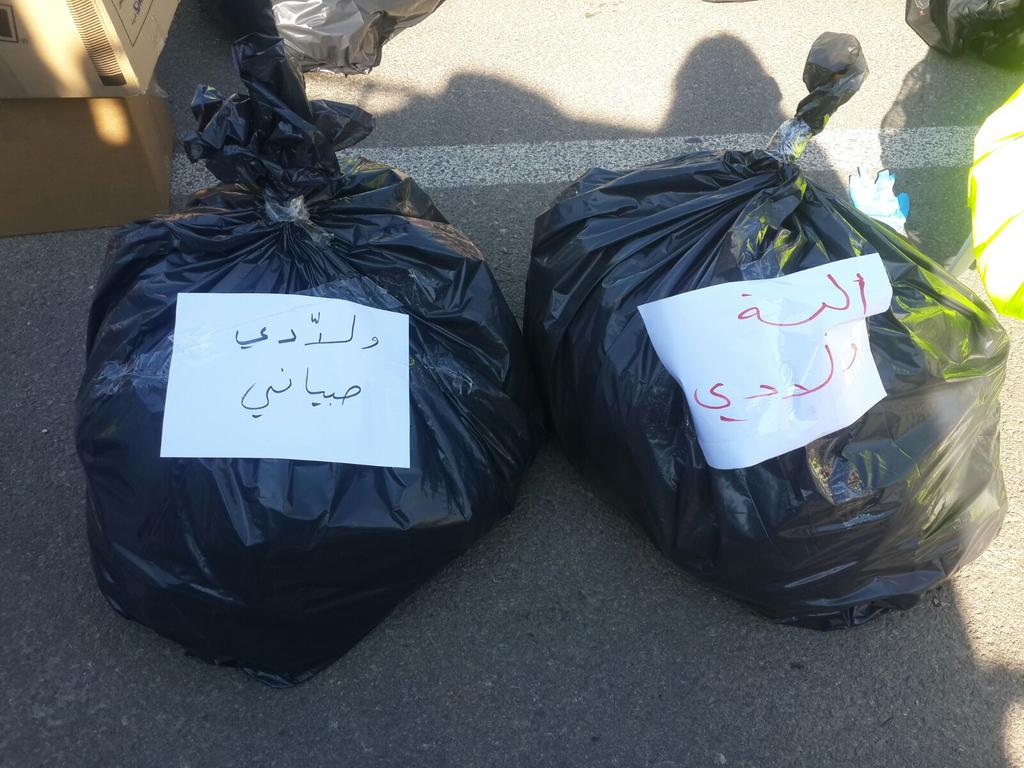
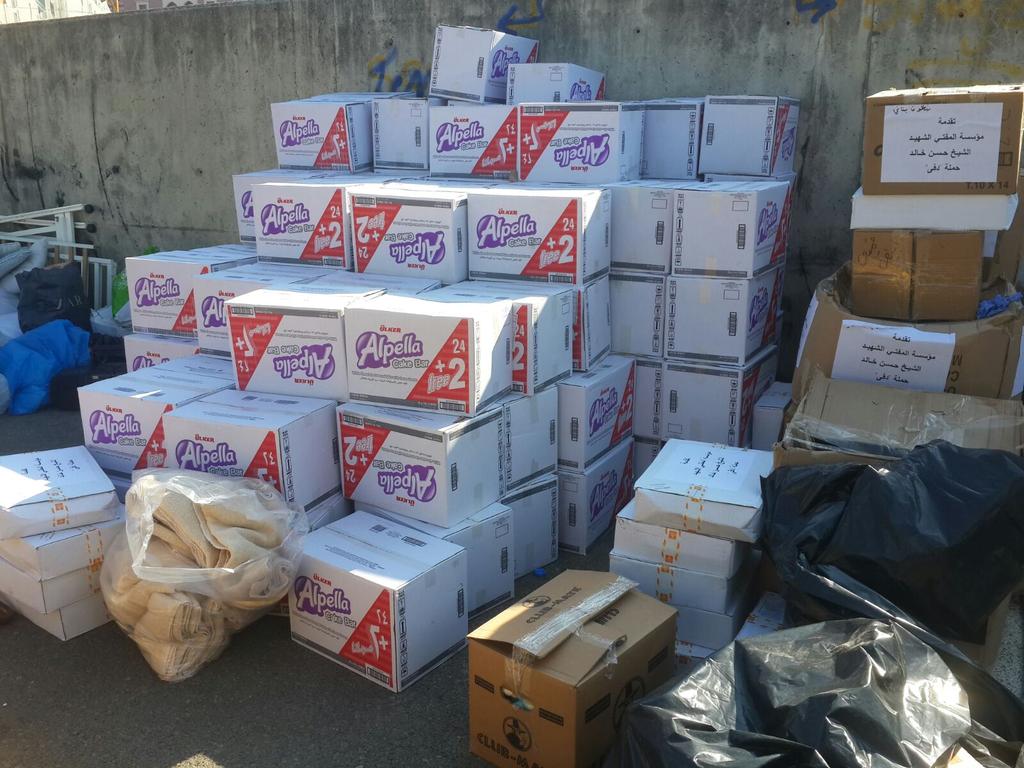
إحصاء: عدد اللبنانيين فاق الخمسة ملايين…نسبة الذكور والإناث متساويان

المرأة وسوق العمل في التعليم
تشكل النساء العاملات نحو 25% من حجم القوى العاملة، مما يجعل مشاركة المرأة بالإنتاج أقل بكثير من حجمها في المجتمع. إذ يبلغ عدد النساء العاملات نحو 325 ألف امرأة عاملة من نحو 1300 مليون عامل. لكن يمكن ملاحظة أن نسبة مشاركة المرأة في العمل قد ارتفعت من 13% عام 1670 إلى النسبة الحالية عام 2014.
وتختلف نسبة المشاركة بين مهنة وأخرى، ففي قطاع التعليم وصل عدد النساء في العام 2013 إلى 72380 أنثى أي ما نسبته 76،6% من إجمالي العاملين في التعليم ما قبل الجامعي، وهذه النسبة ارتفعت مقارنة مع عام 2003، إذ بلغ عددهن حينها 59،860 أنثى شكّلن يومها ما نسبته 71% من إجمالي العامل في قطاع التعليم ما قبل الجامعي.
في المرحلة الجامعية فقد بلغ عدد الإناث 76،7 أستاذة أي ما نسبته 37،8% من إجمالي عدد الأساتذة وذلك عام 2013، وكان عدد الأساتذة النساء بلغ 3226 أستاذة عام 2003 أي ما نسبته 28،8%.
اللبنانيَّات 50%
على الرغم من الفكرة الشائعة أن عدد الإناث أكثر من عدد الذكور في لبنان، ويمكن أن يكون ذلك صحيحاً في الواقع، إلاّ أن الأرقام المسجلة في الدوائر الرسمية تشير إلى أن عدد اللبنانيين الذين يحملون الجنسية اللبنانية (بما فيهم المهاجرين) في بداية عام 2015 وصل إلى 5135338 مواطناً بينهم 2564372 أنثى و2570960 ذكراً، أي بنسبة مناصفة بين الجنسين تقارب الـ50%.
وبلغ متوسط عدد الولادات سنوياً خلال السنوات الخمس الماضية 100045 ولادة. منها 48930 ولادة أنثى أي نسبة 49% و51115 ولادة ذكر أي بنسبة 51% وهذه الأرقام تتعارض مع ما هو شائع أن عدد ولادات الإناث أكثر من ولادات الذكور.
من جهة أخرى بلغ متوسط عدد الوفيات سنوياً خلال السنوات الخمس الماضية 24968 حالة وفاة، منها 11363 وفاة أنثى أي بنسبة 45،5% و13605 وفاة ذكر أي بنسبة 54،5%.
تشير هذه الأرقام إلى أن اللبنانيين يتزايدون سنوياً بمقدار 75077 نسمة منهم 37567 أنثى أي بنسبة 50% و37510 ذكراً أي بنسبة 50%.
 نادي عين وزين البيئي
نادي عين وزين البيئي  سلطان الجميري
سلطان الجميري 



 Anbaa Online
Anbaa Online 
 الخارجية البريطانية
الخارجية البريطانية  حملة دفى
حملة دفى